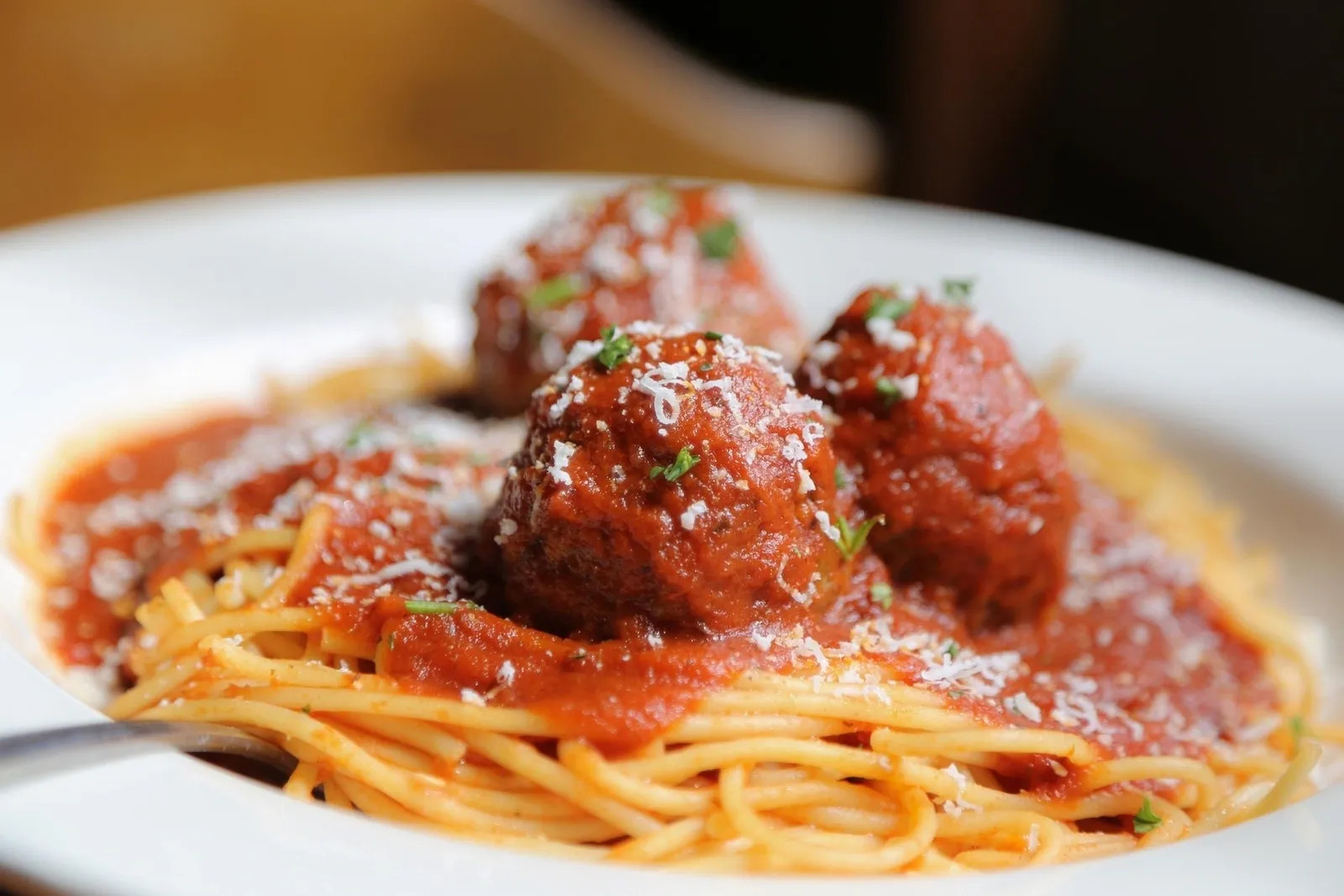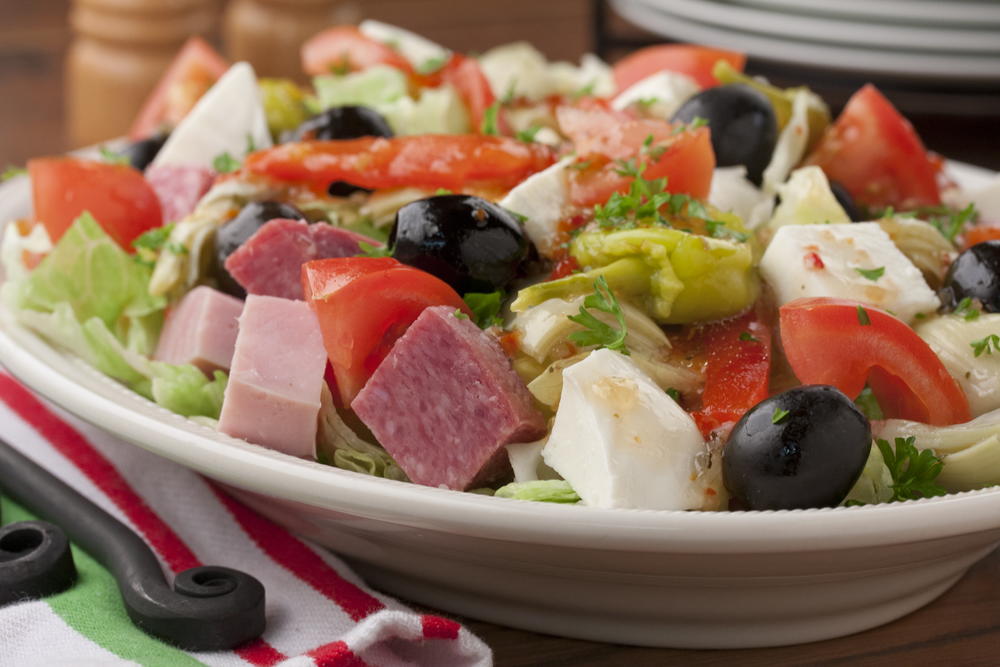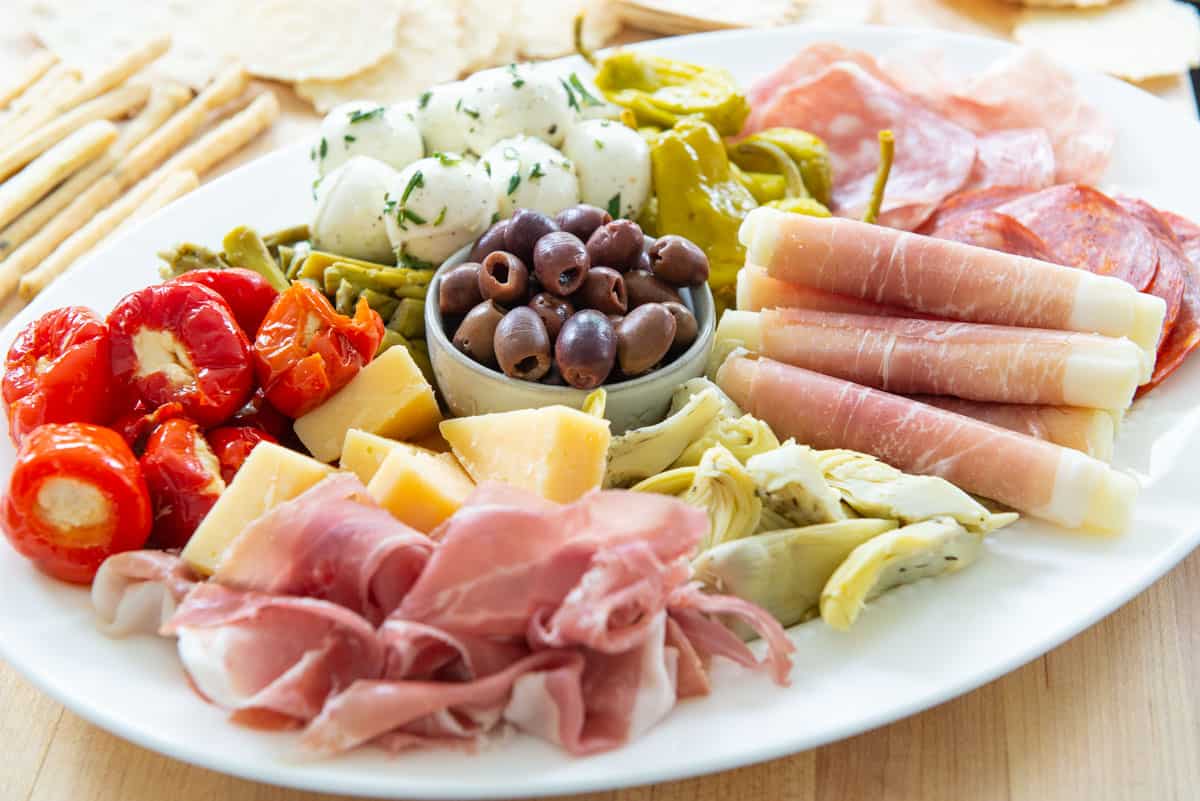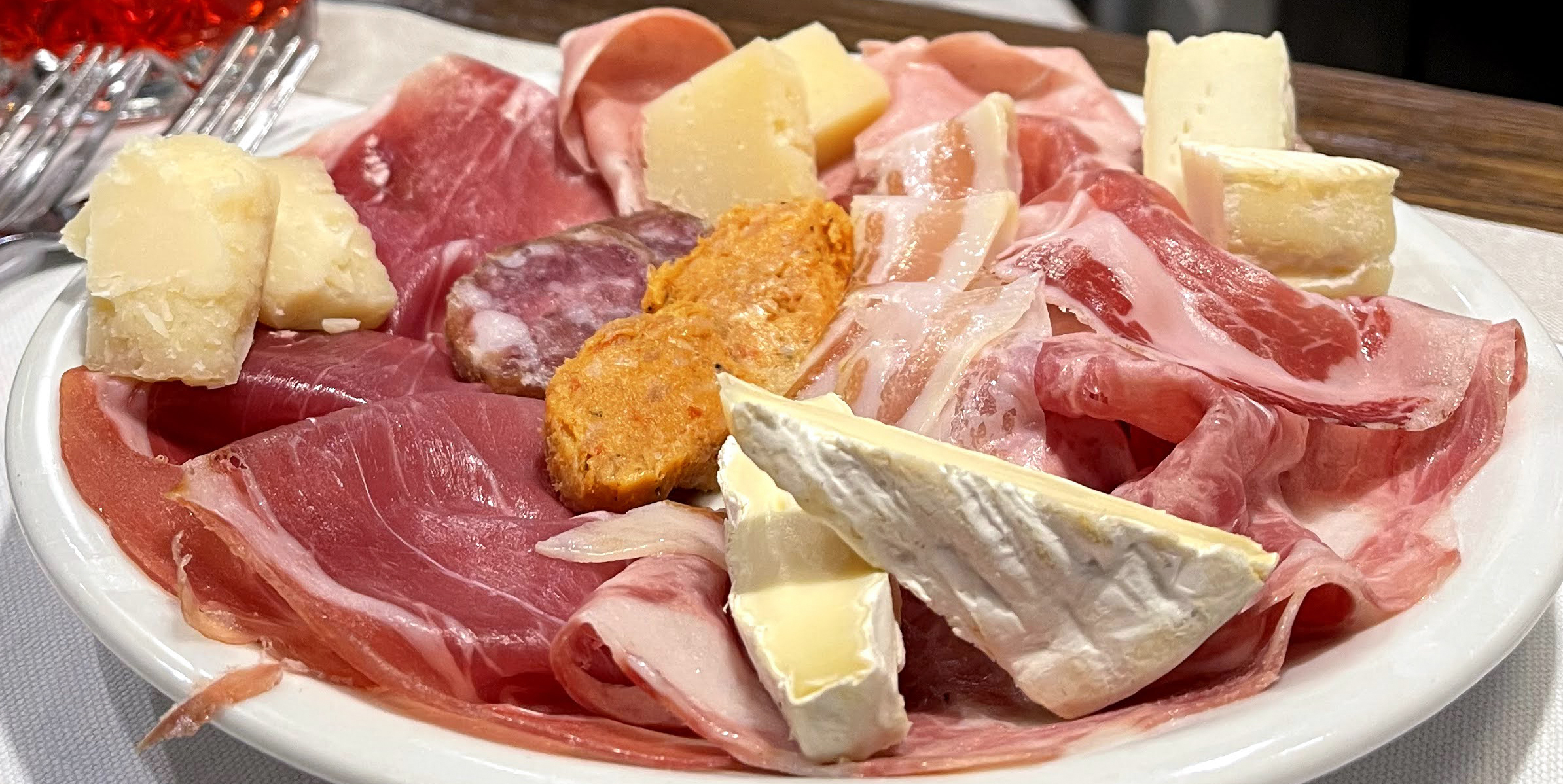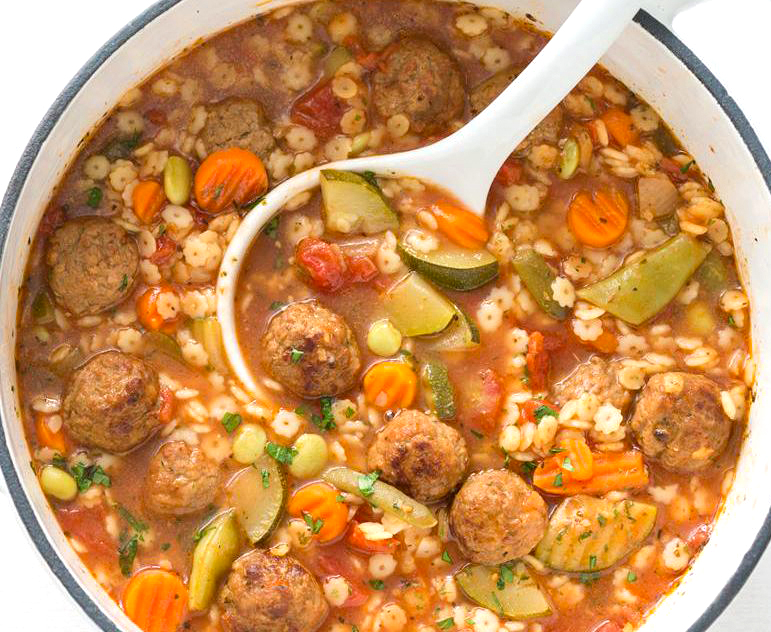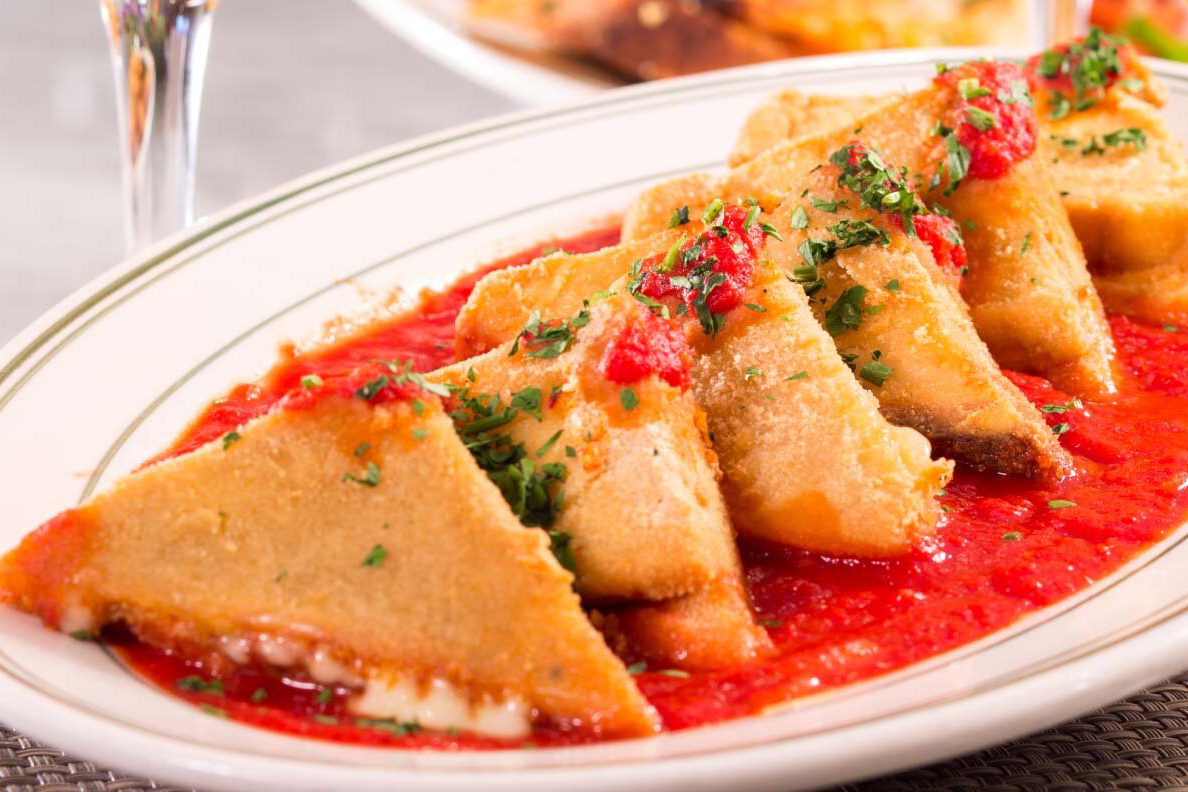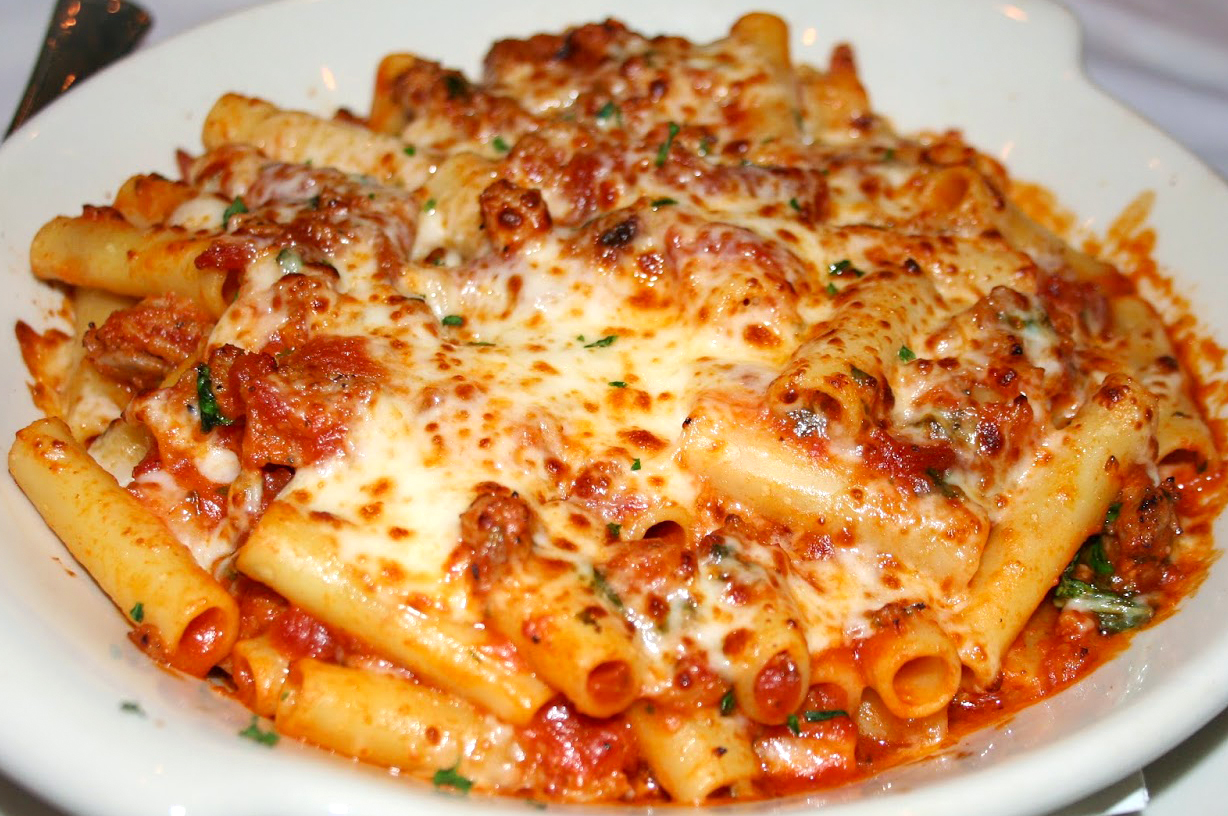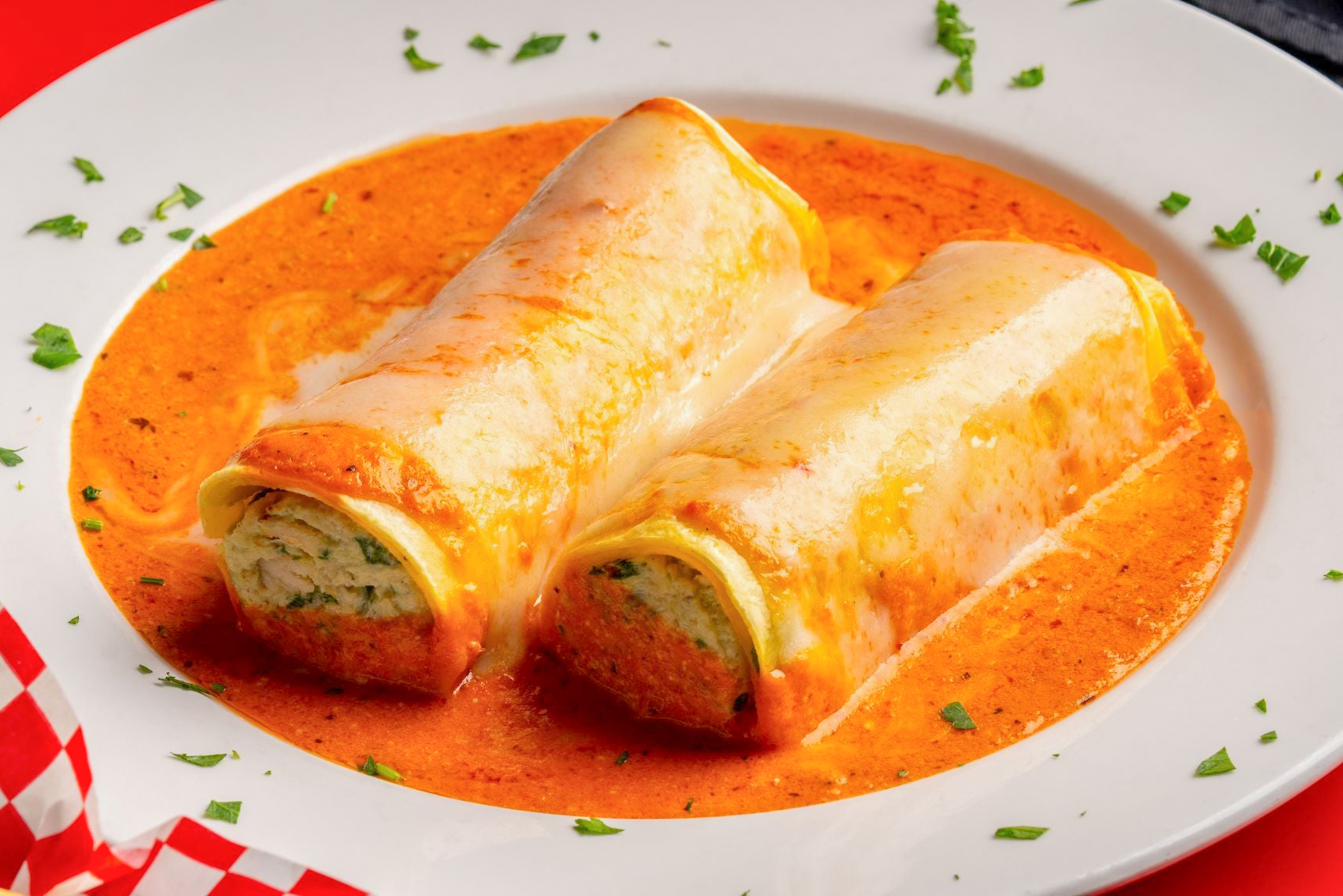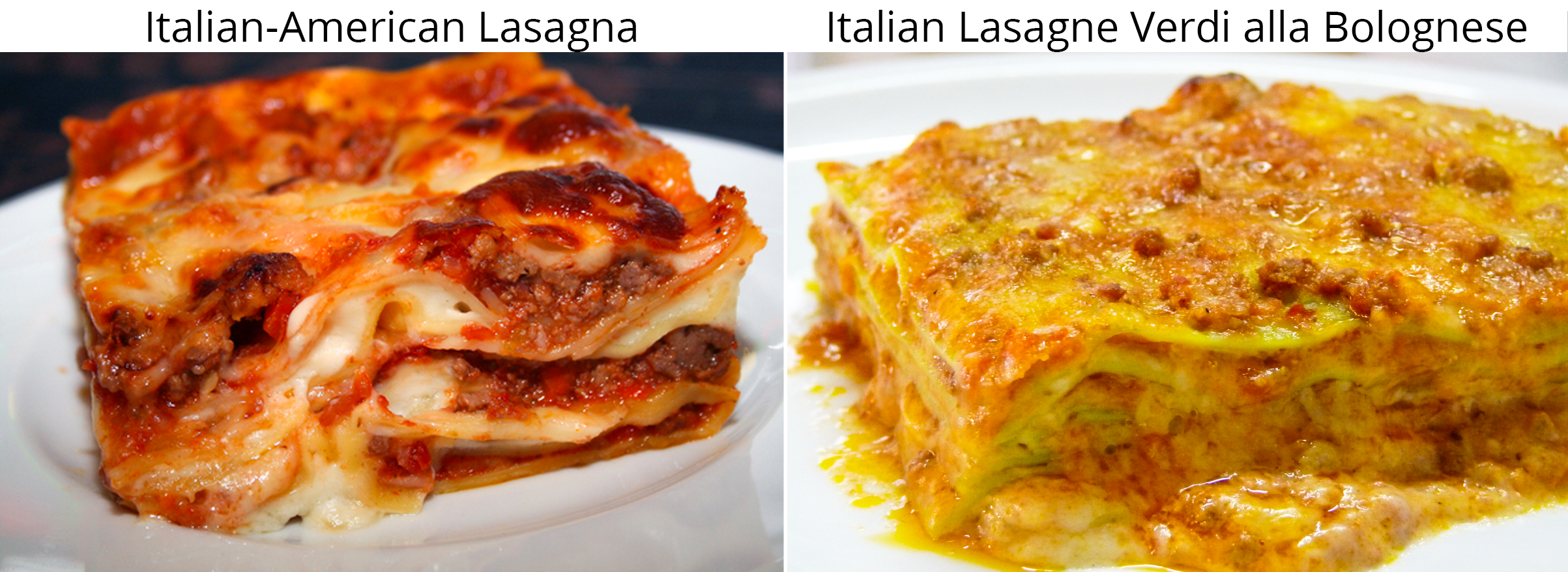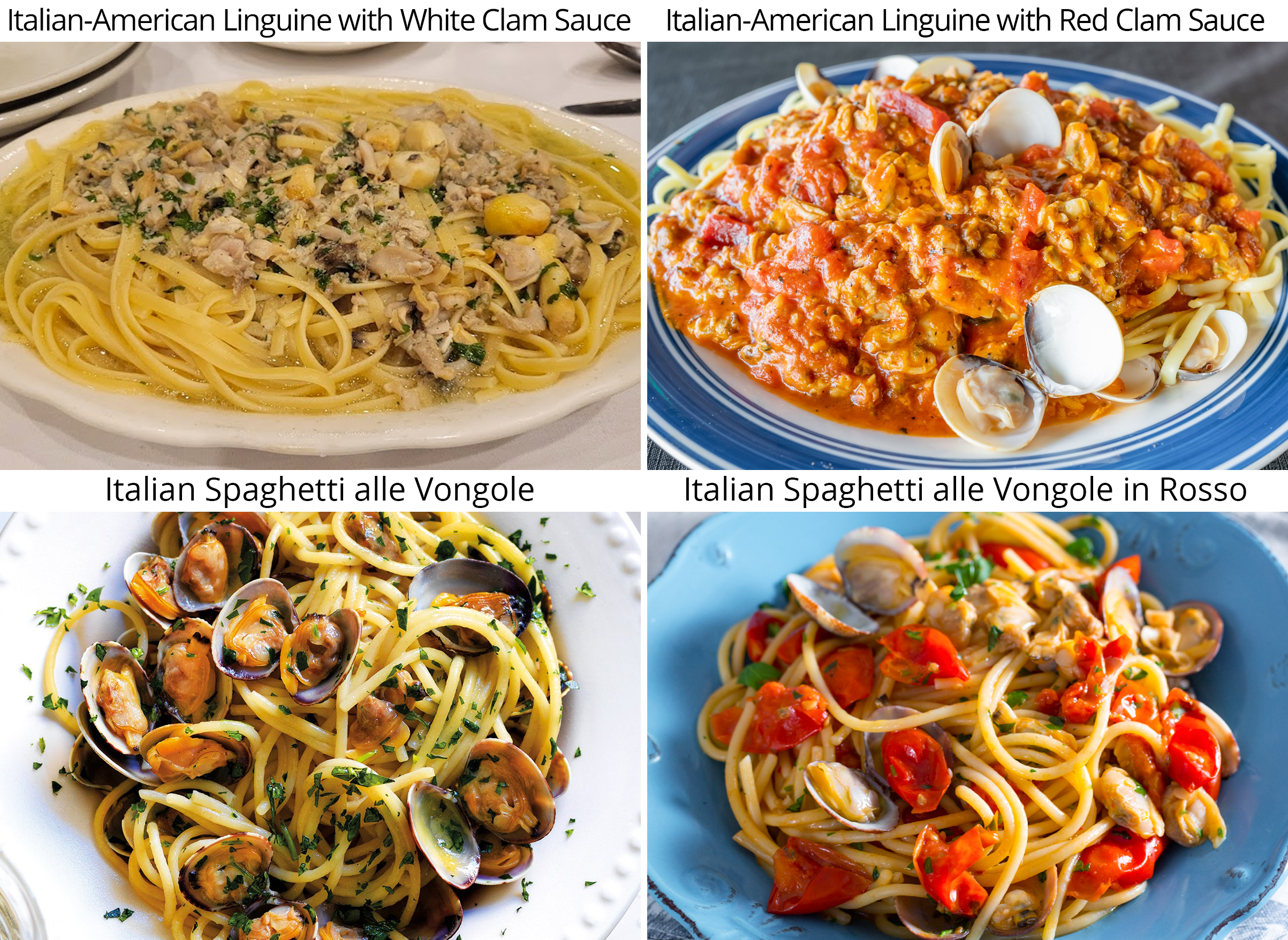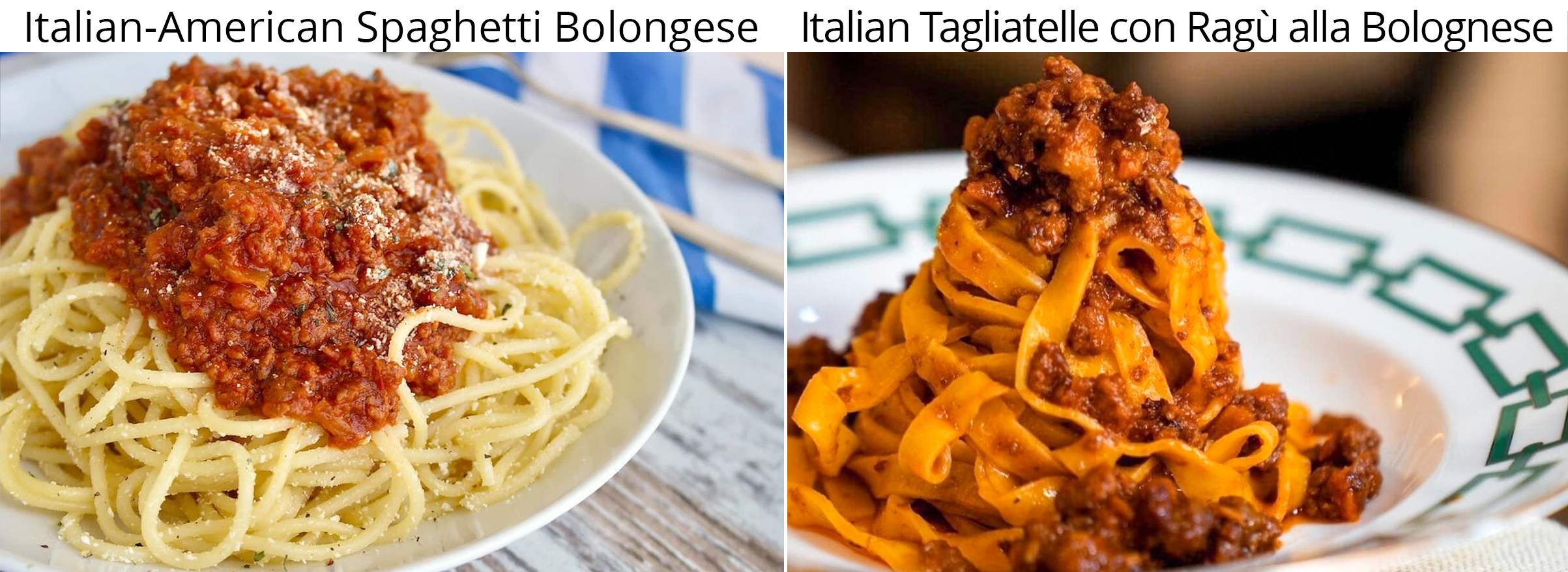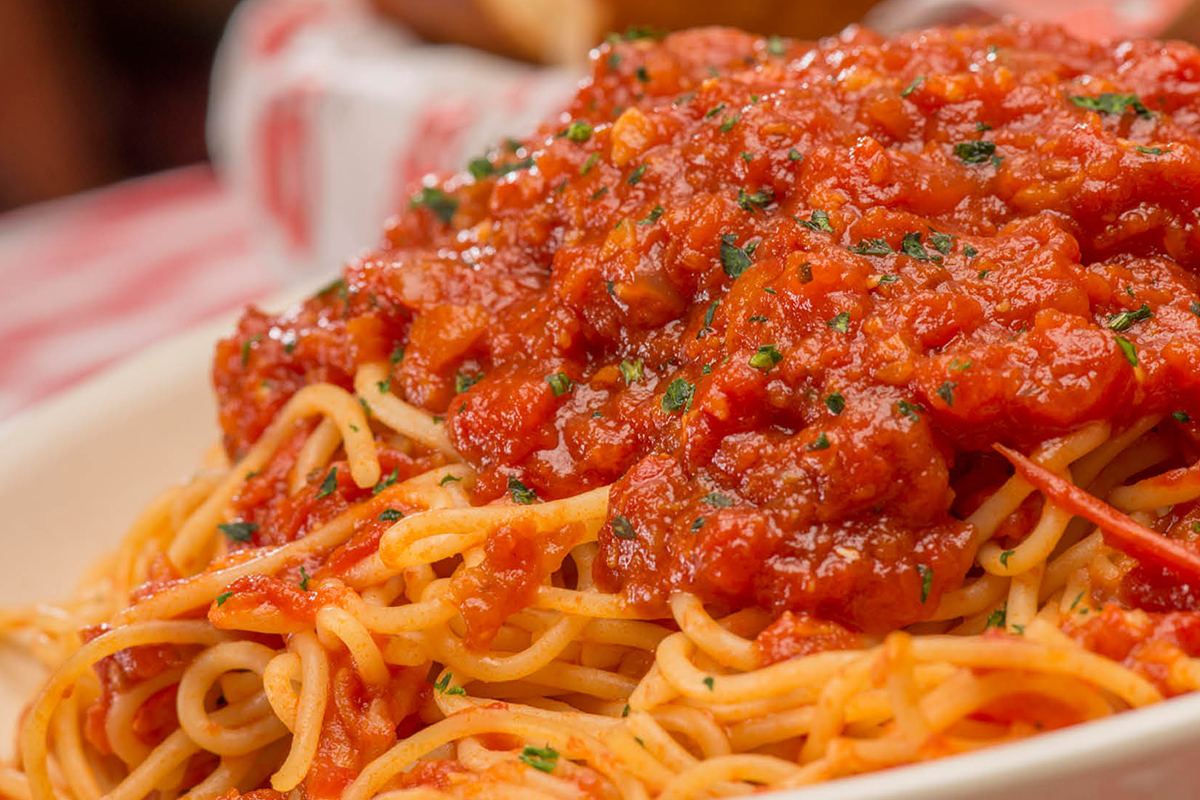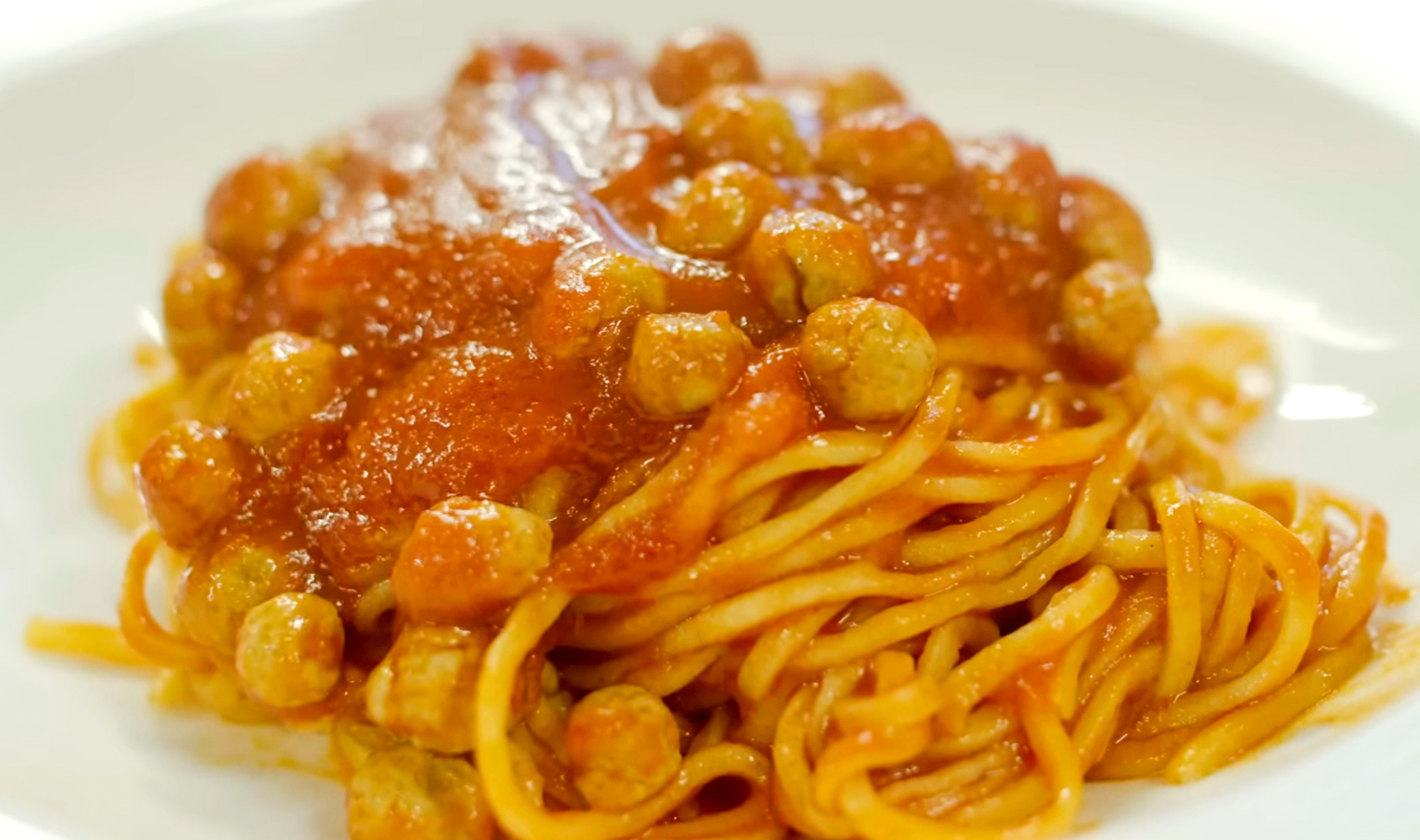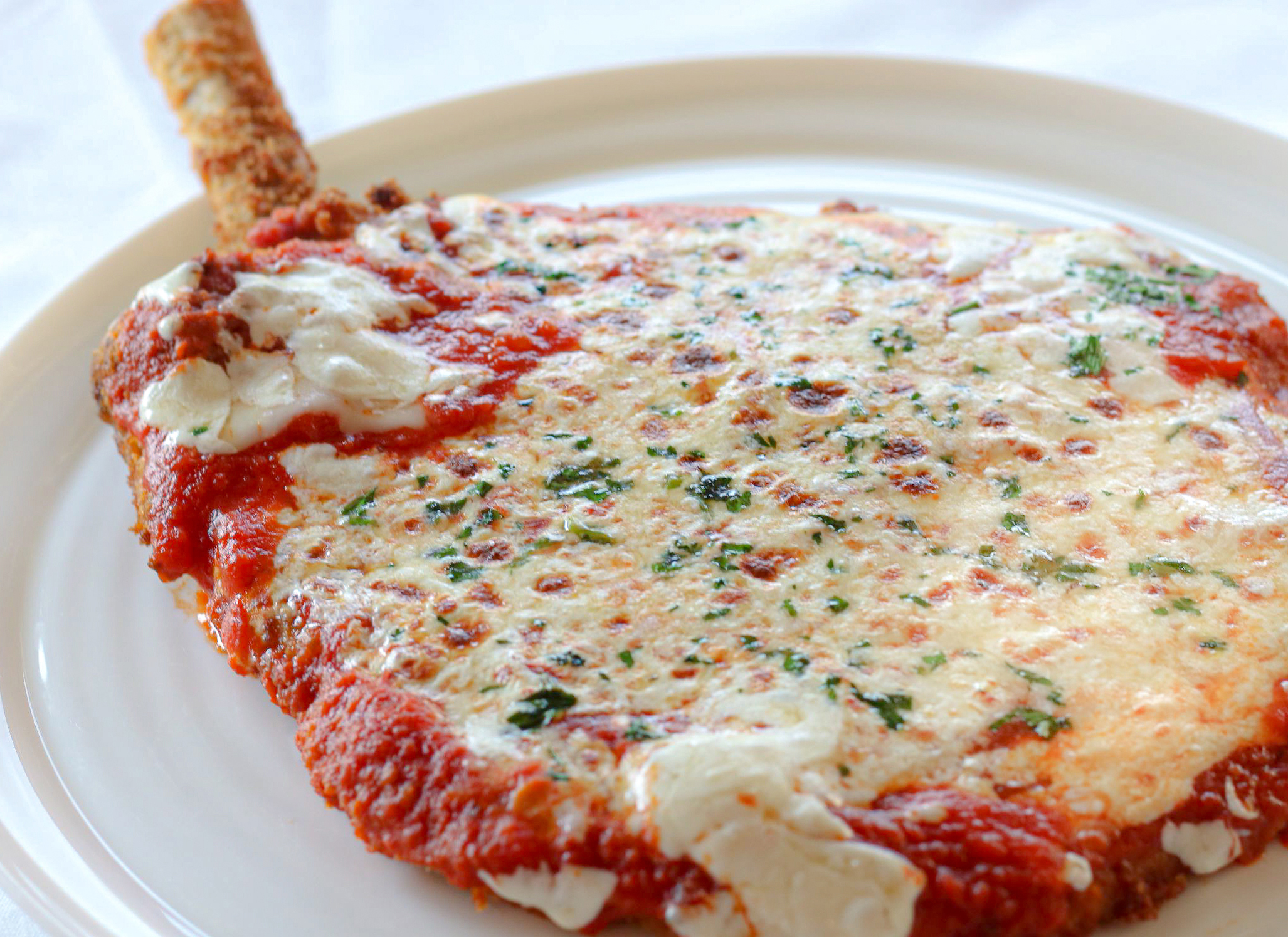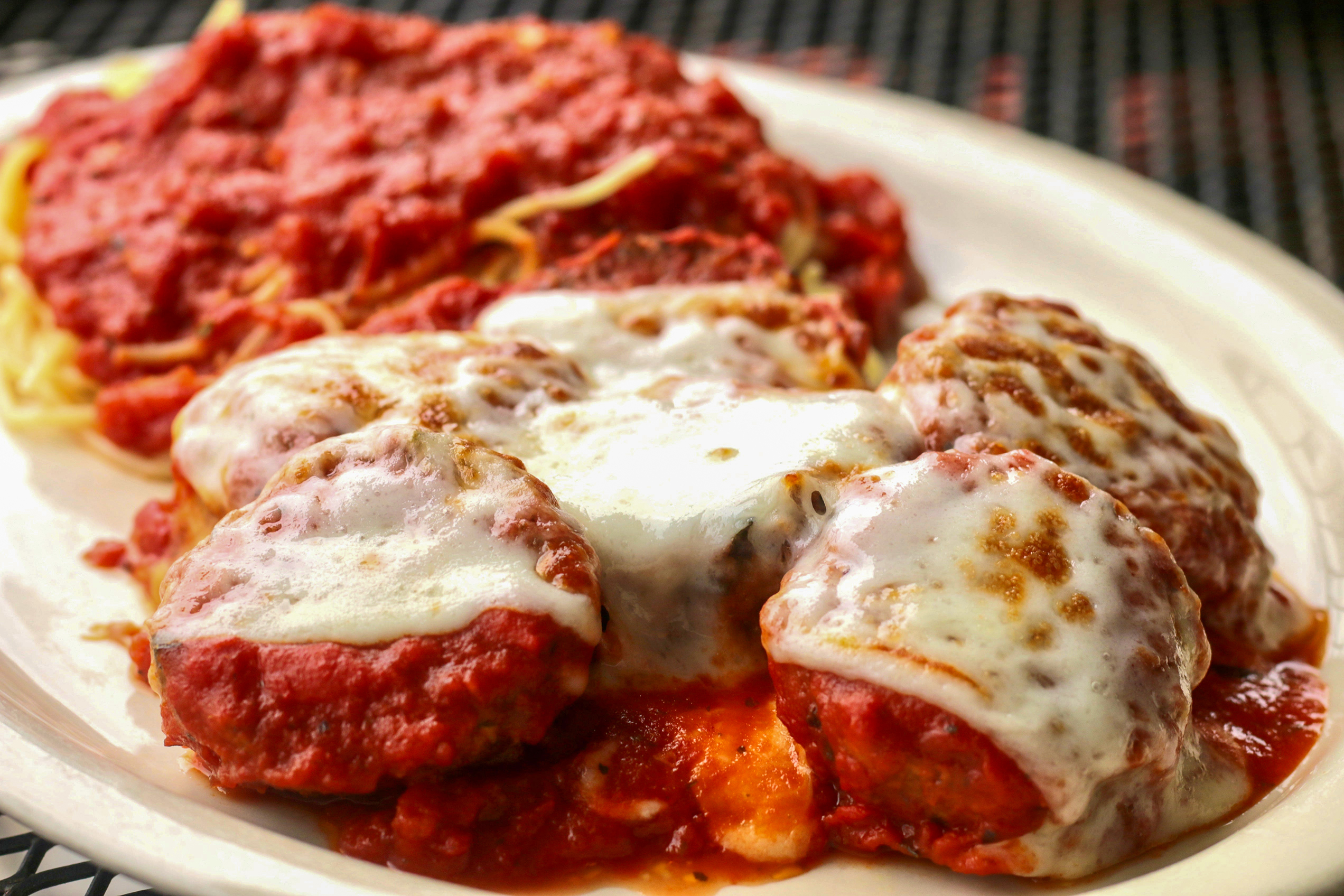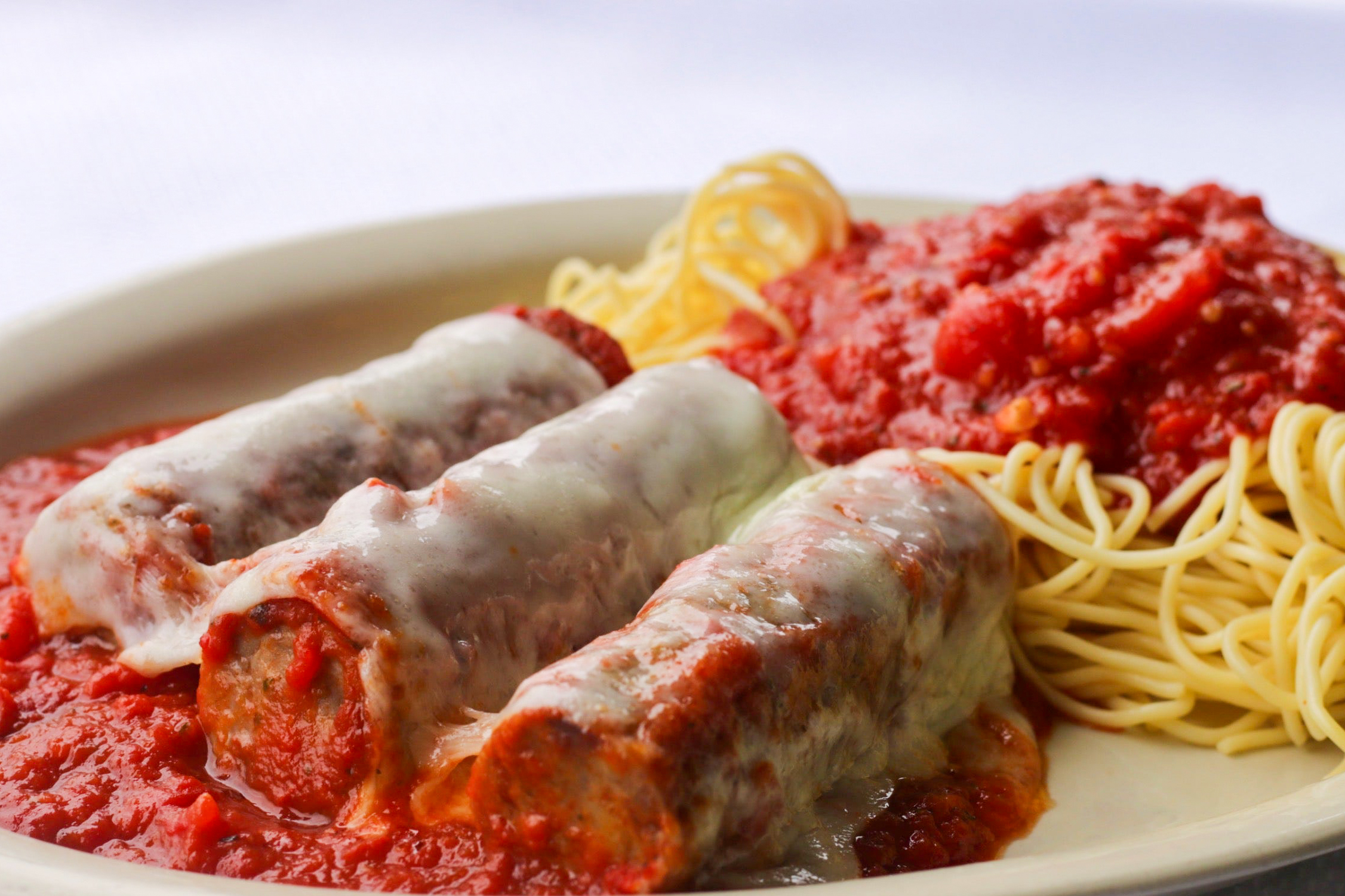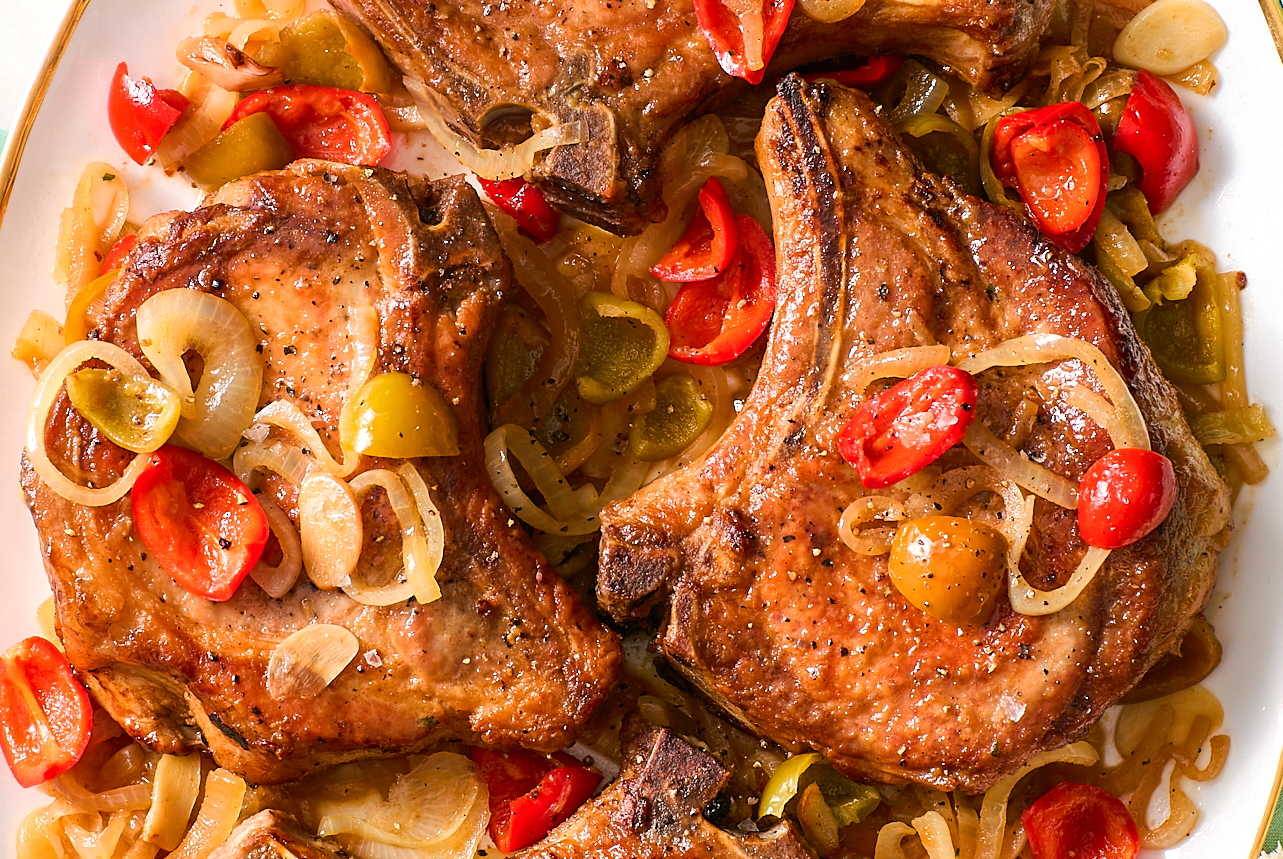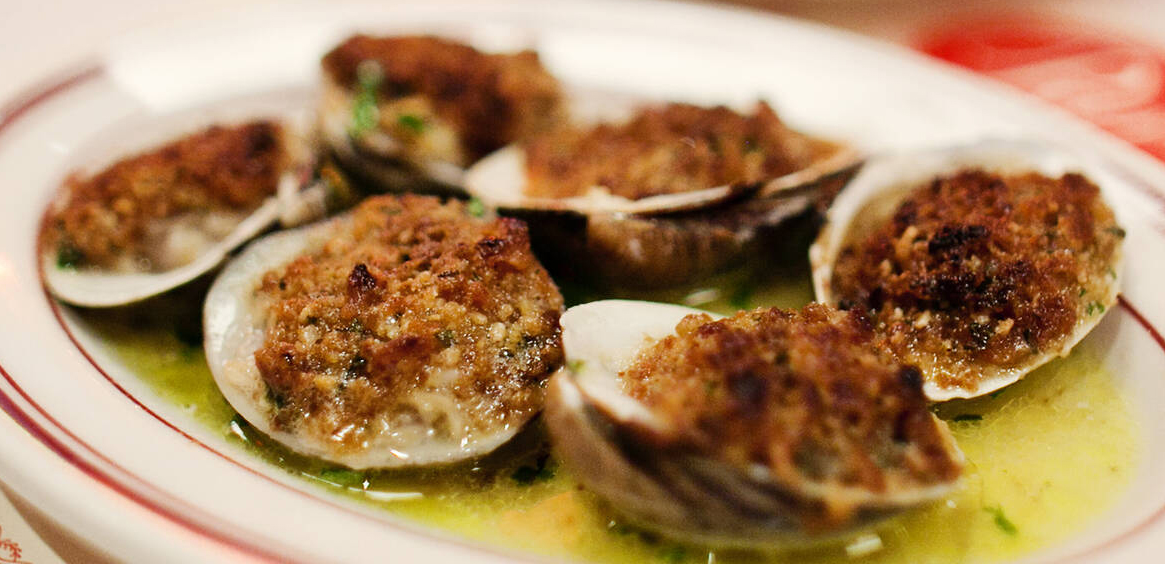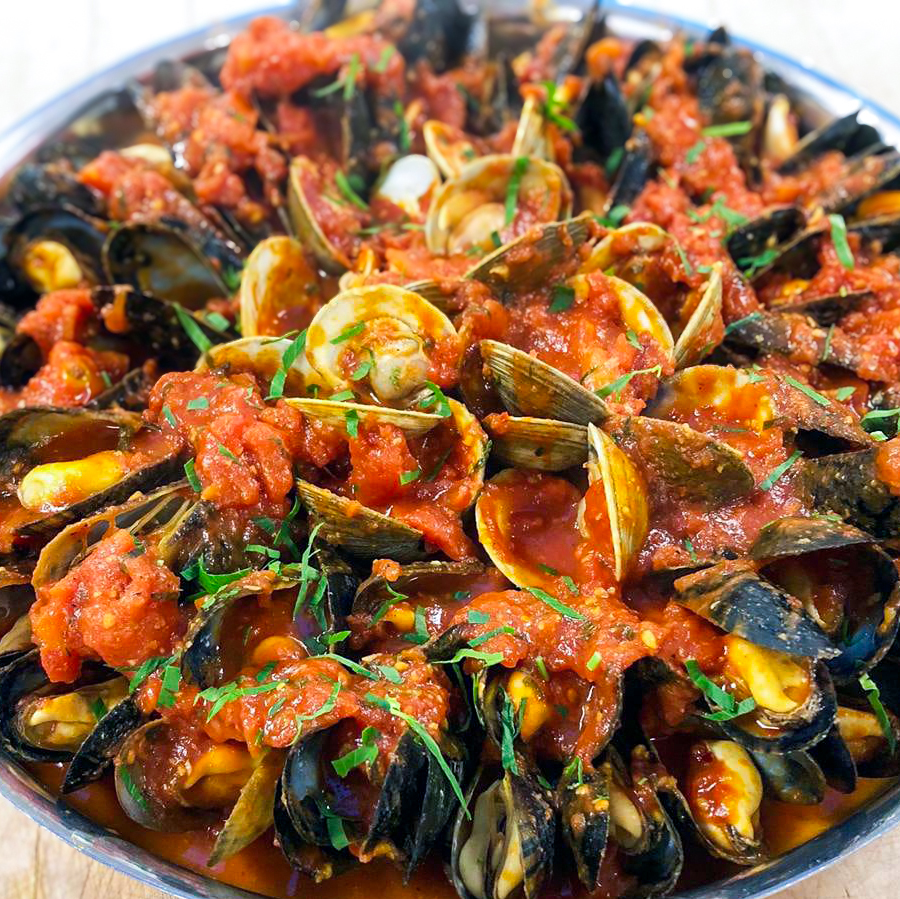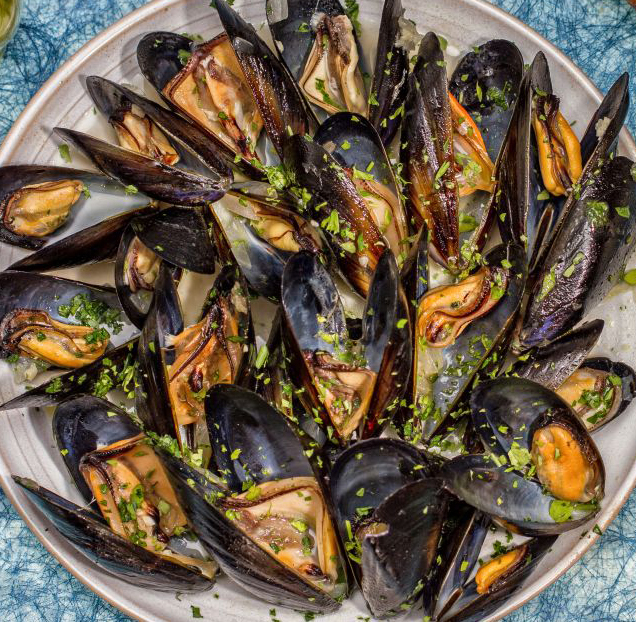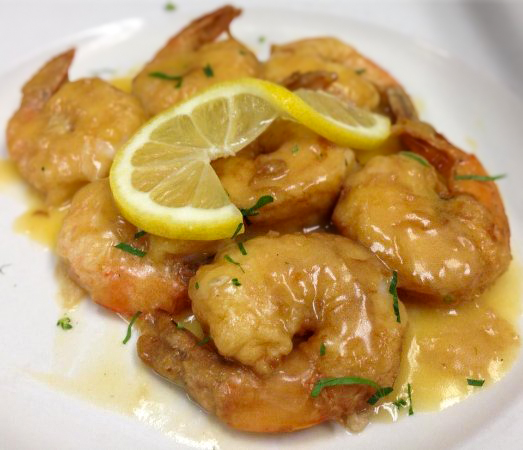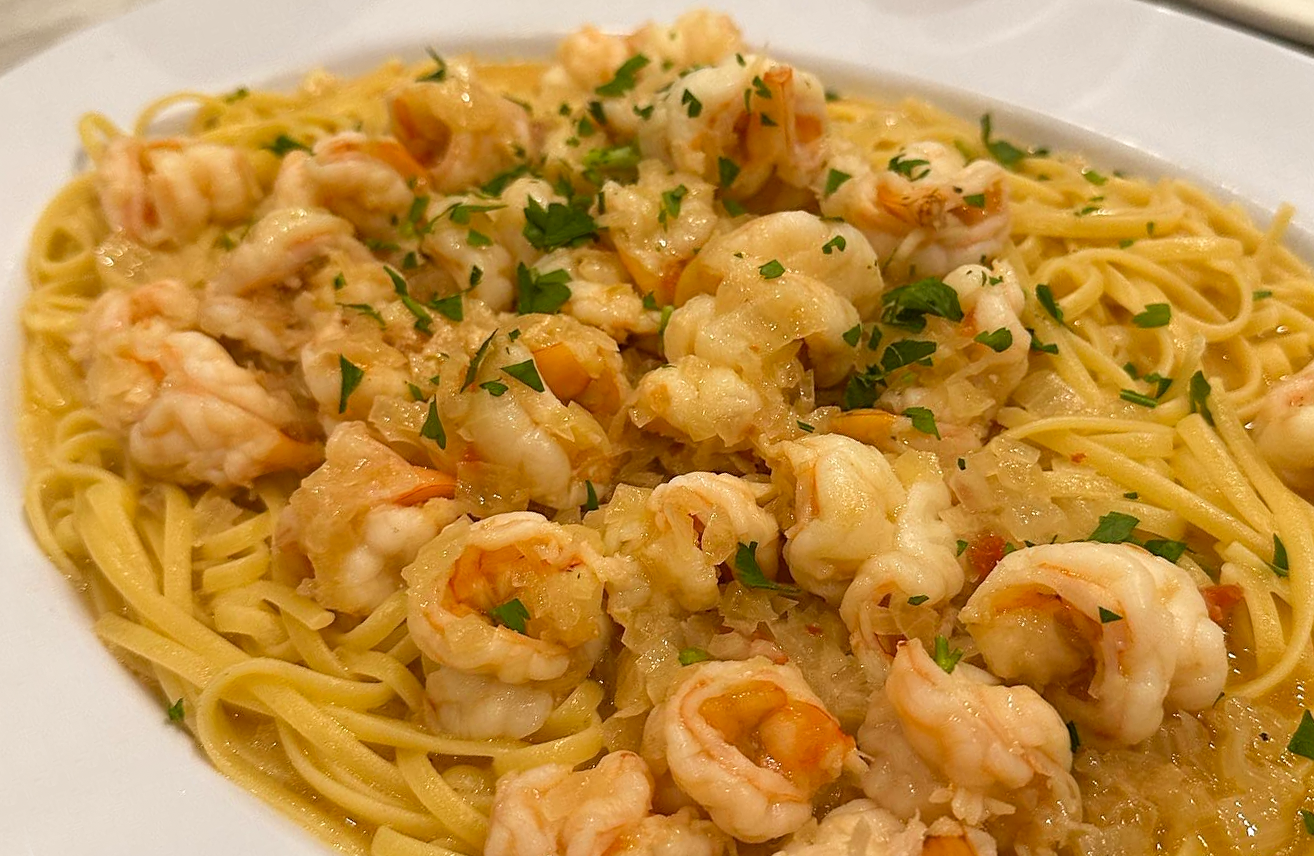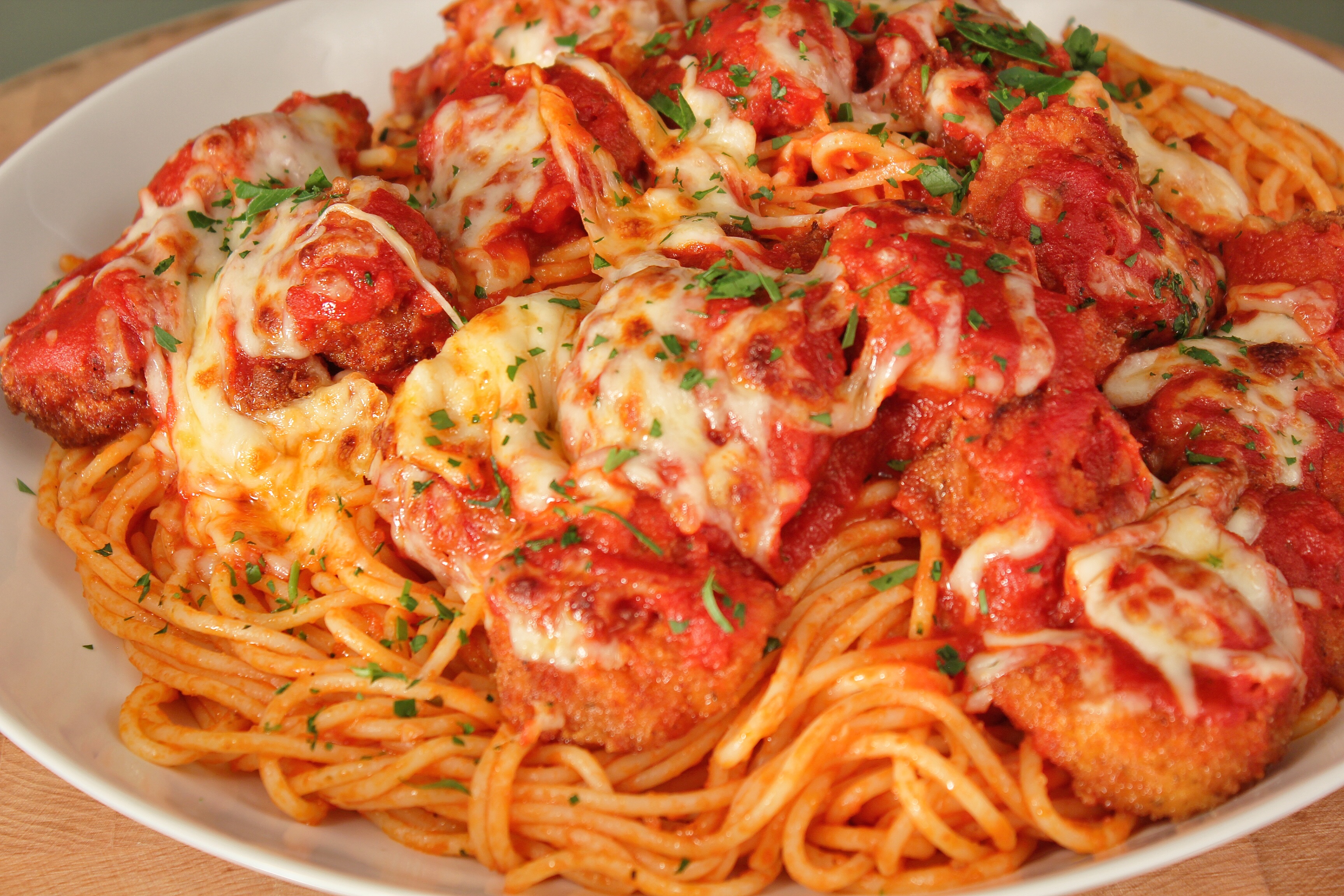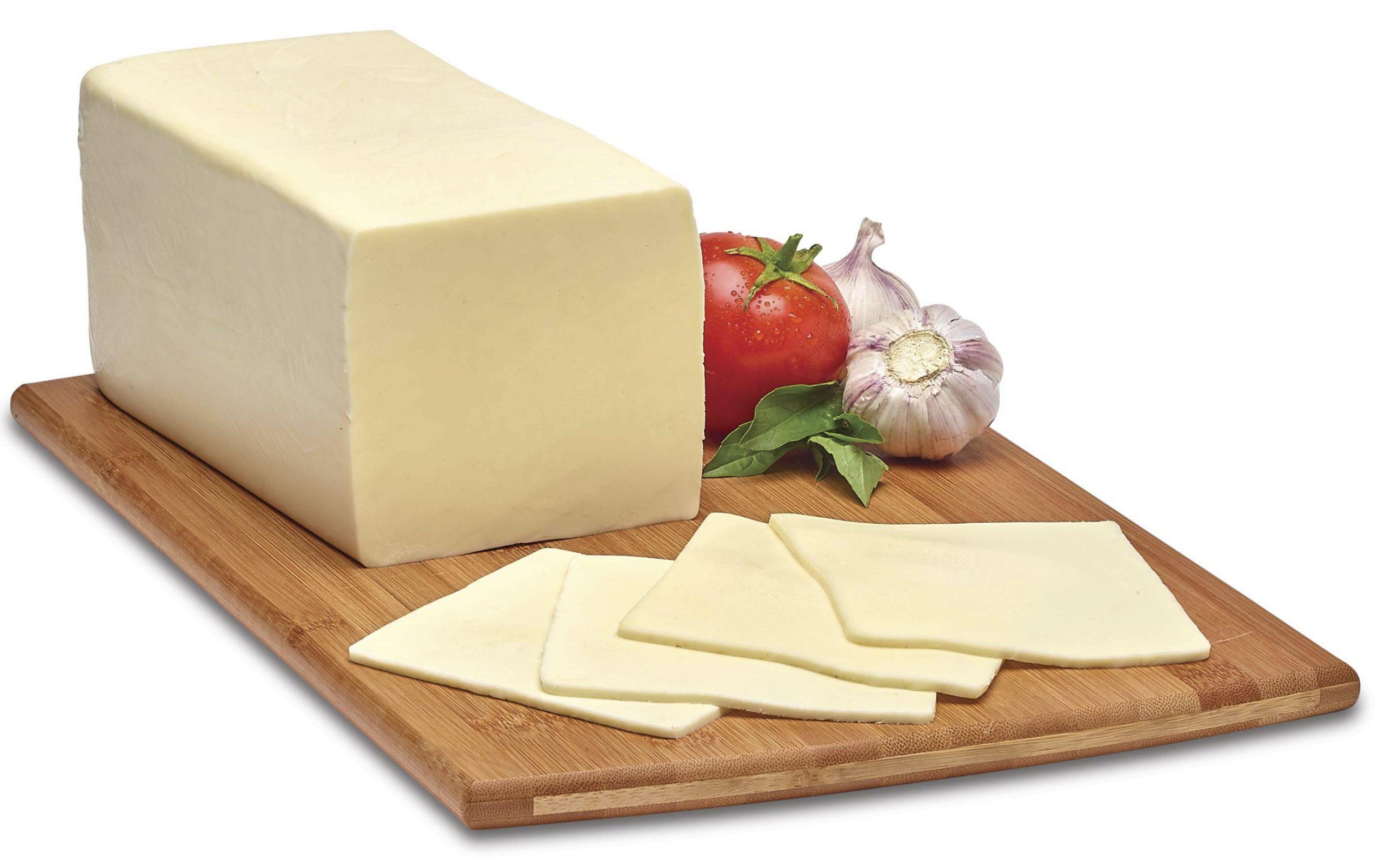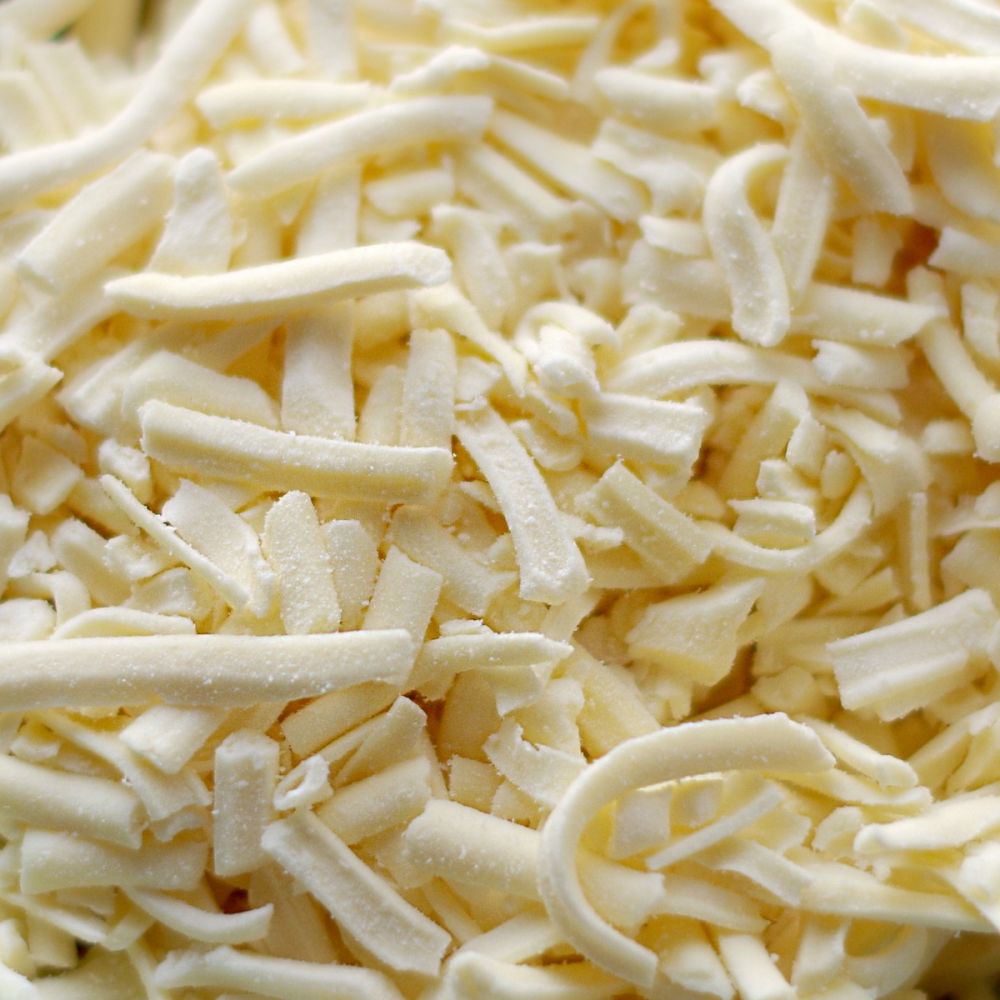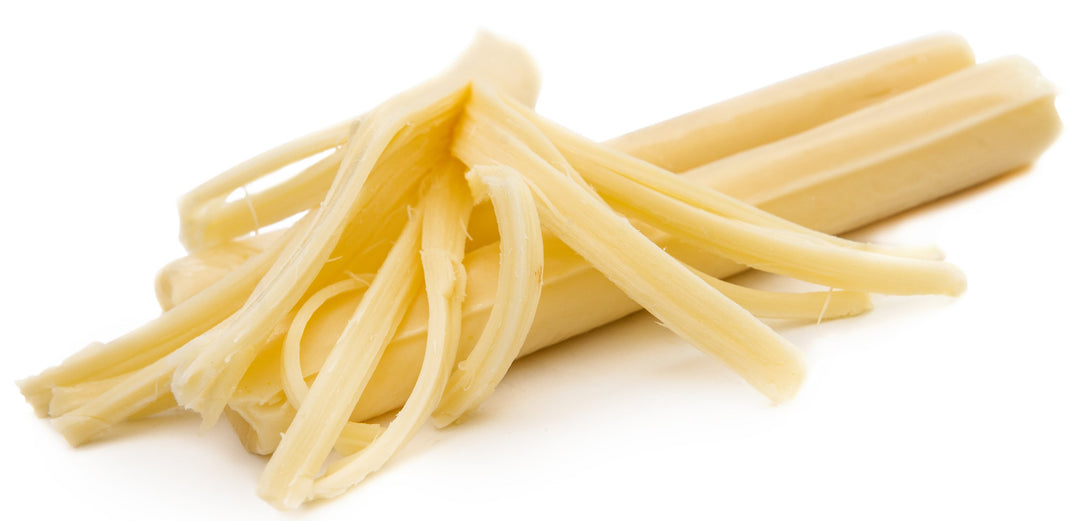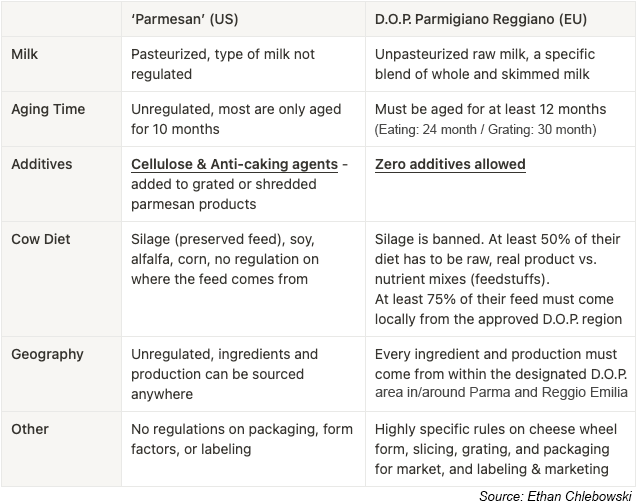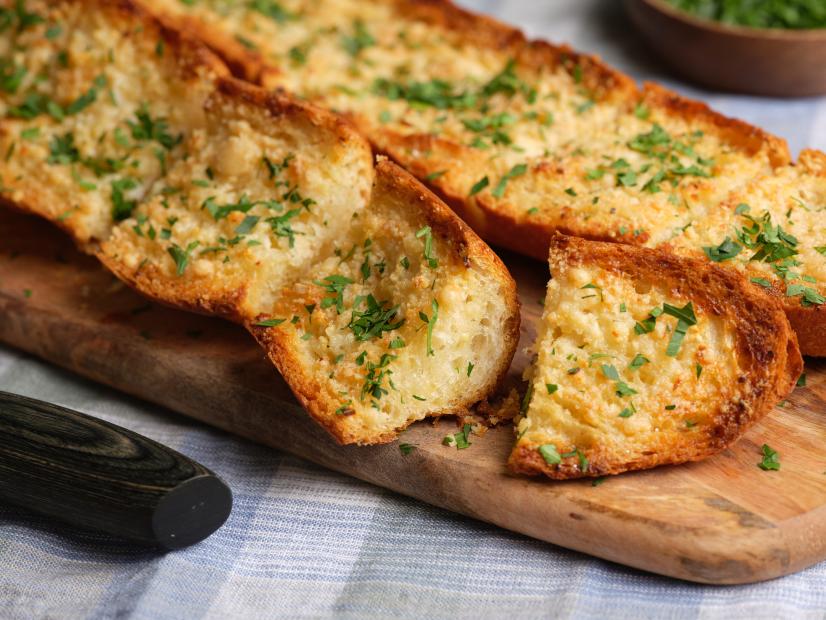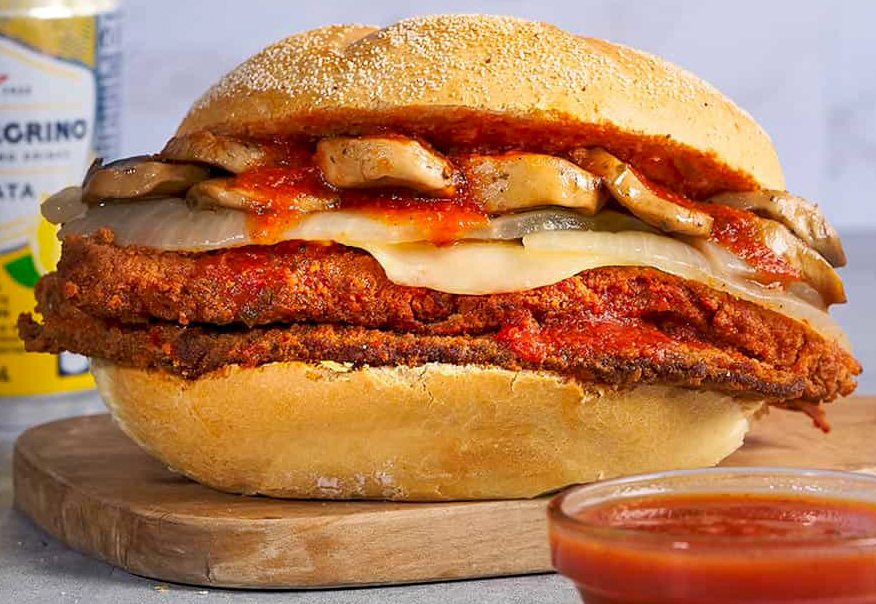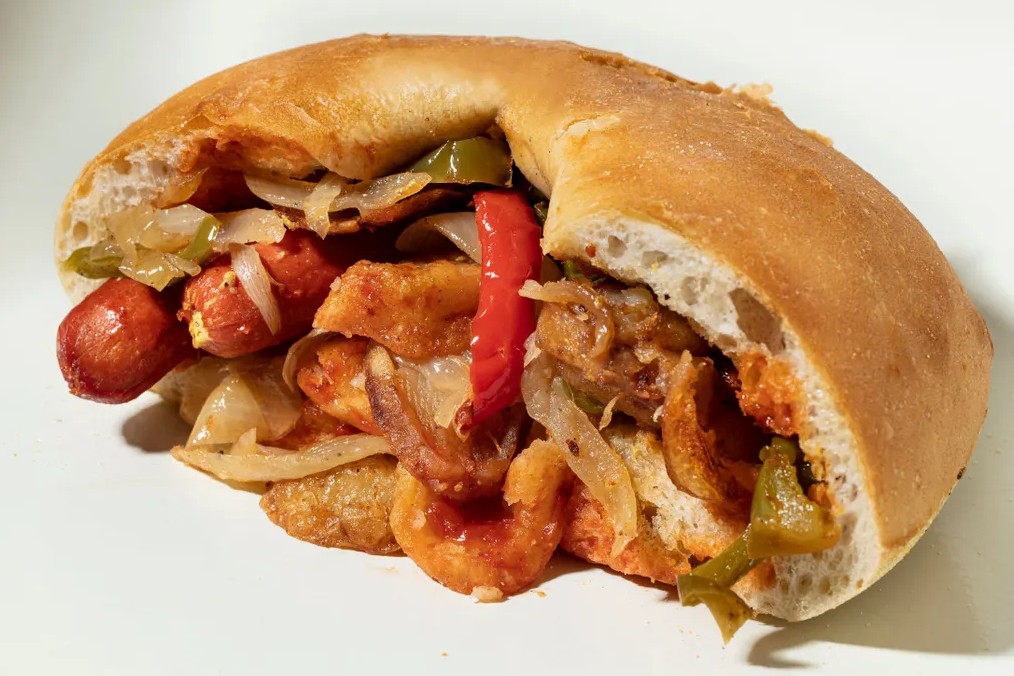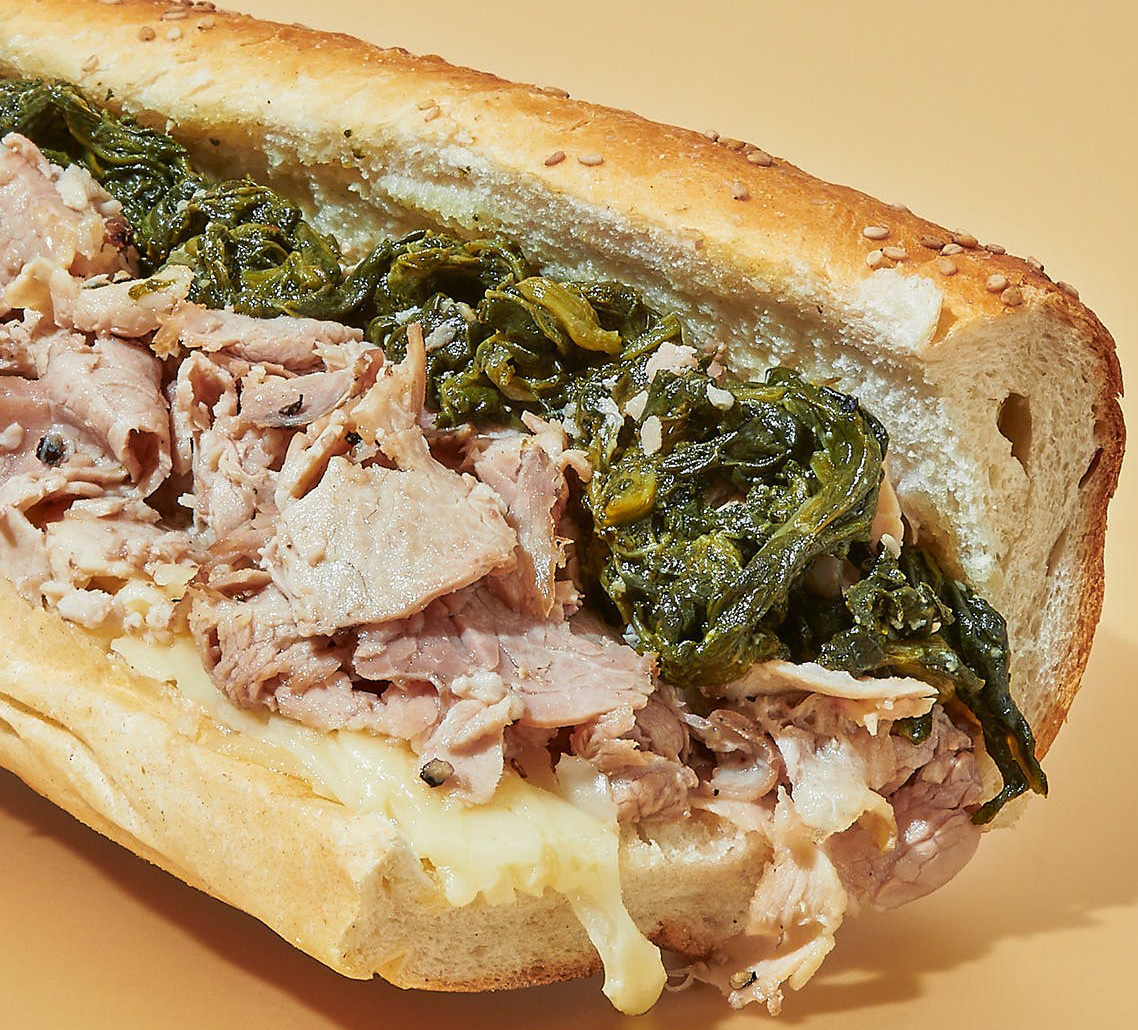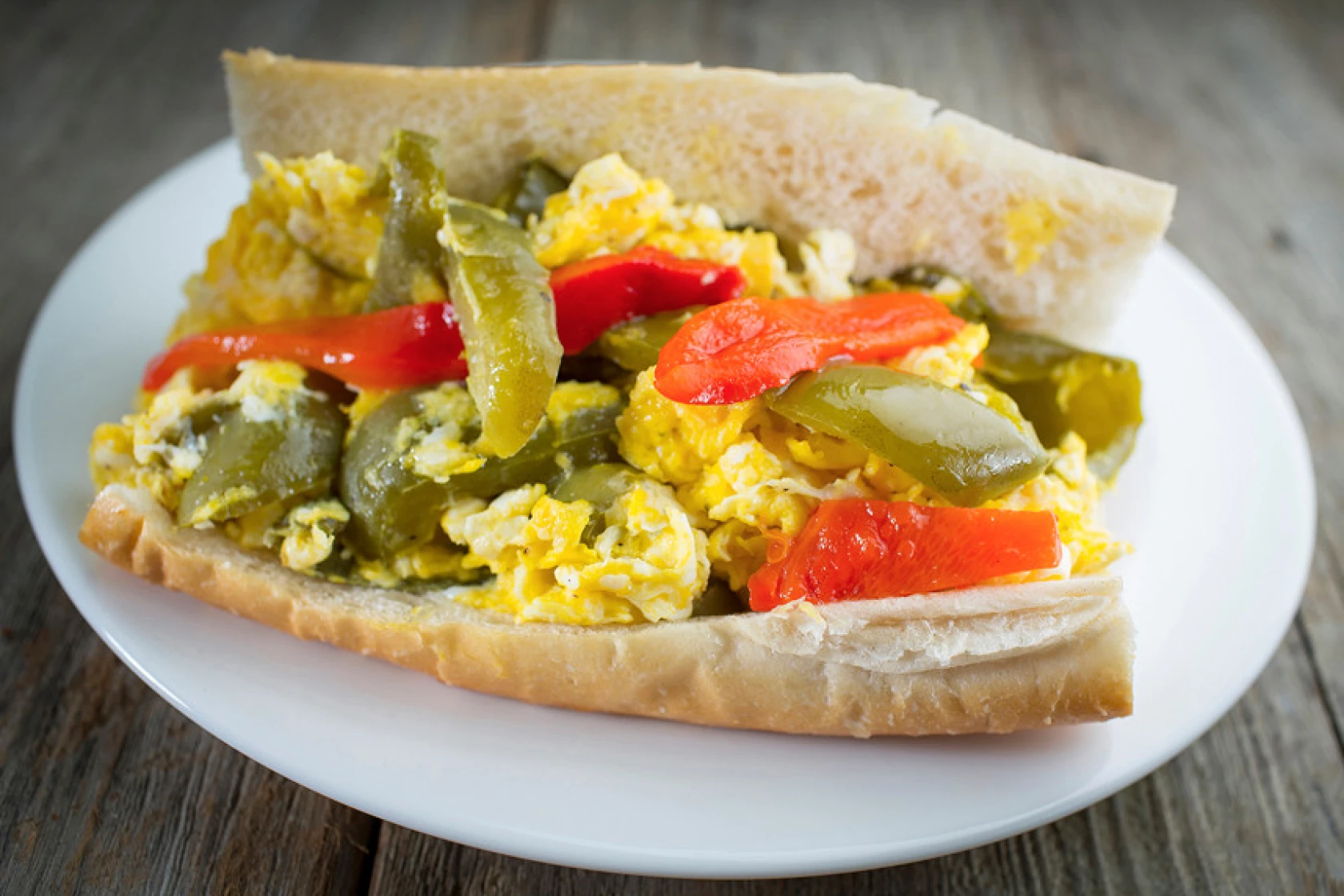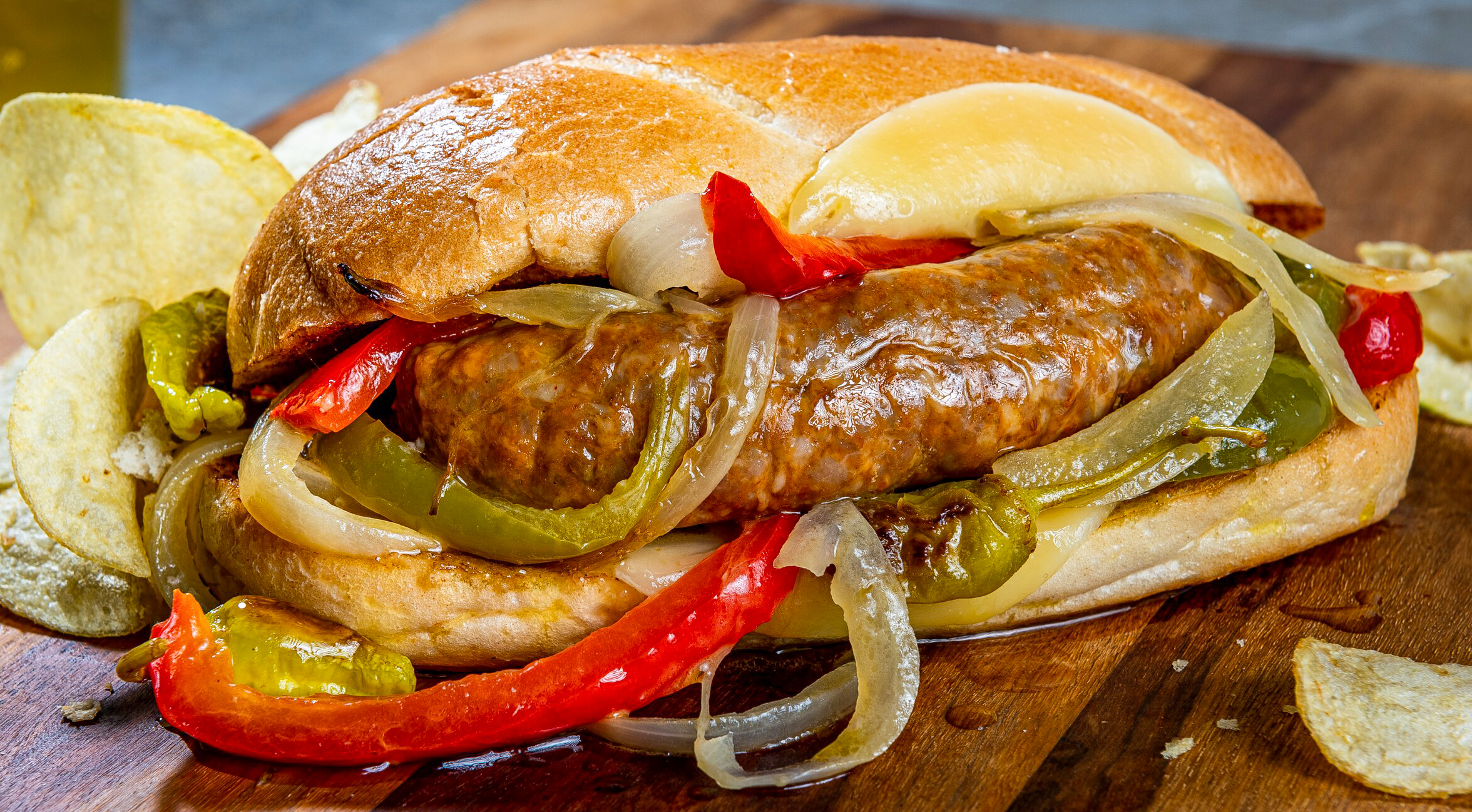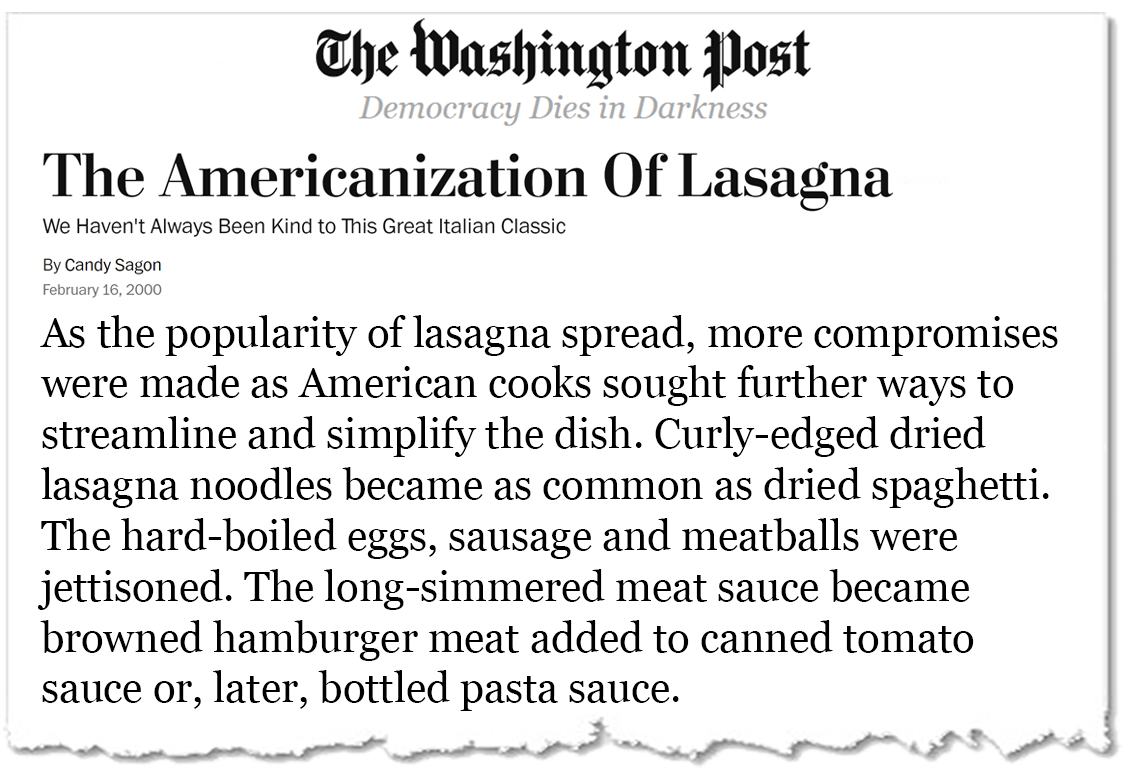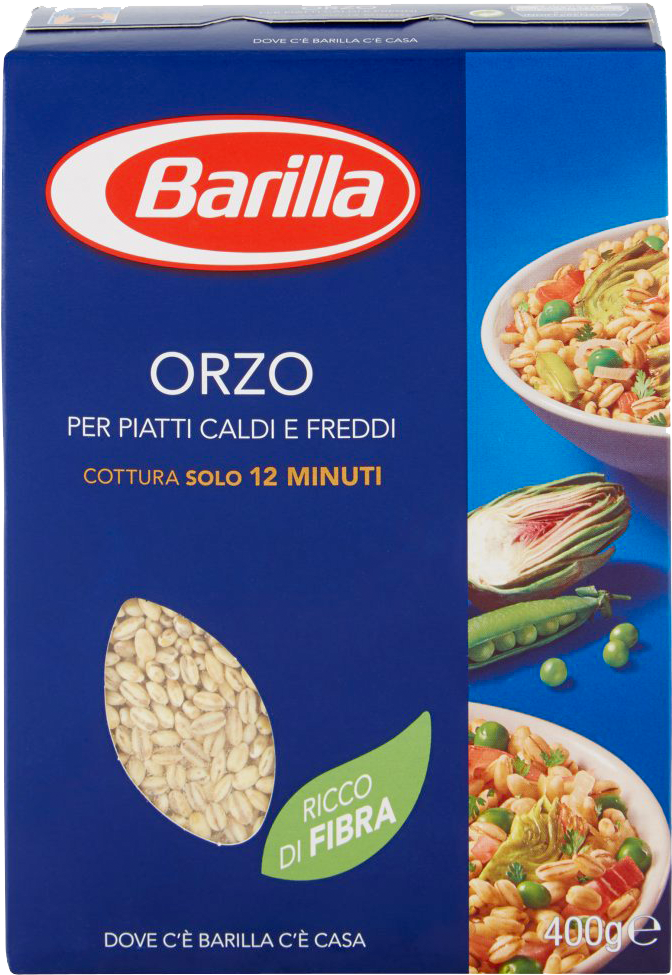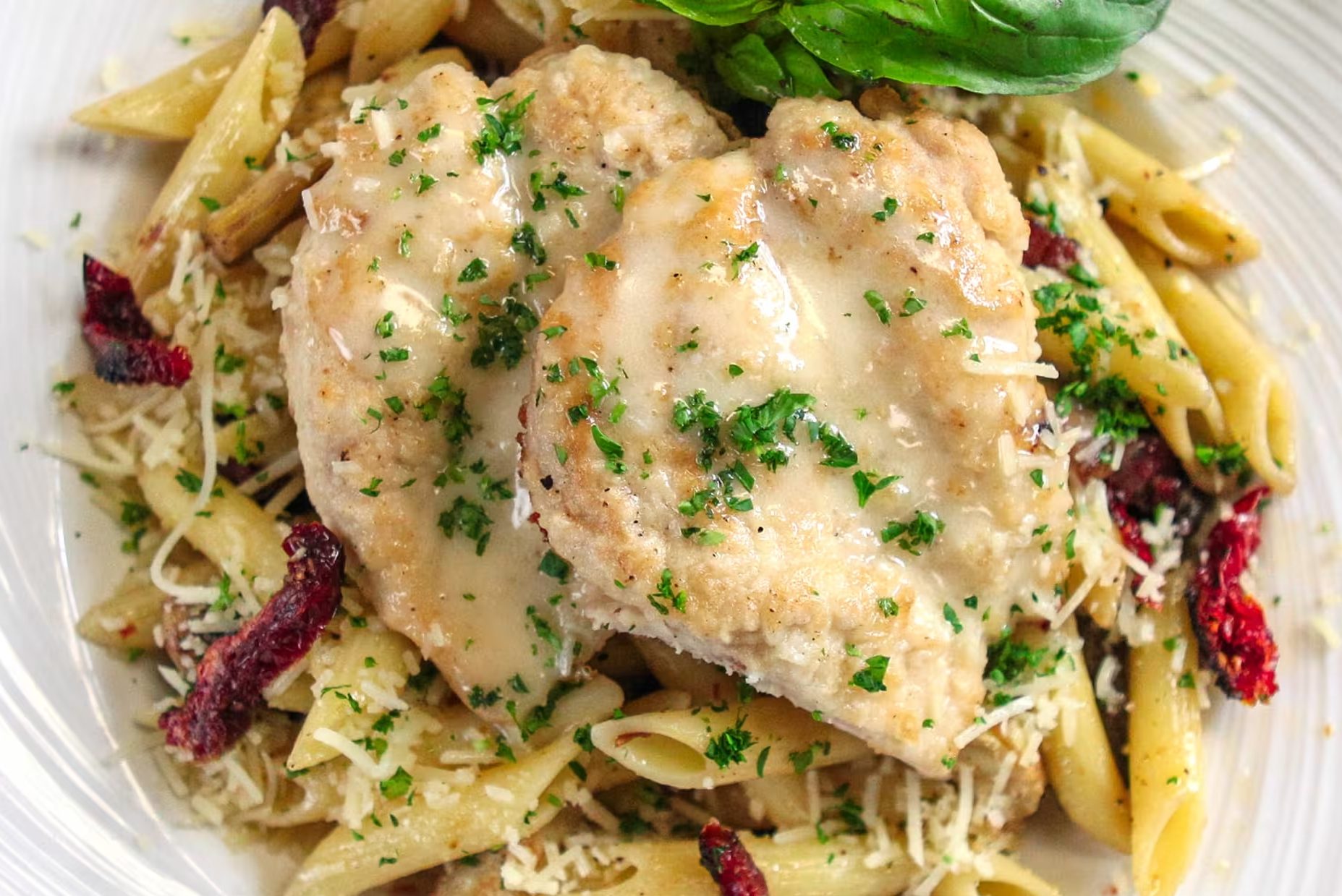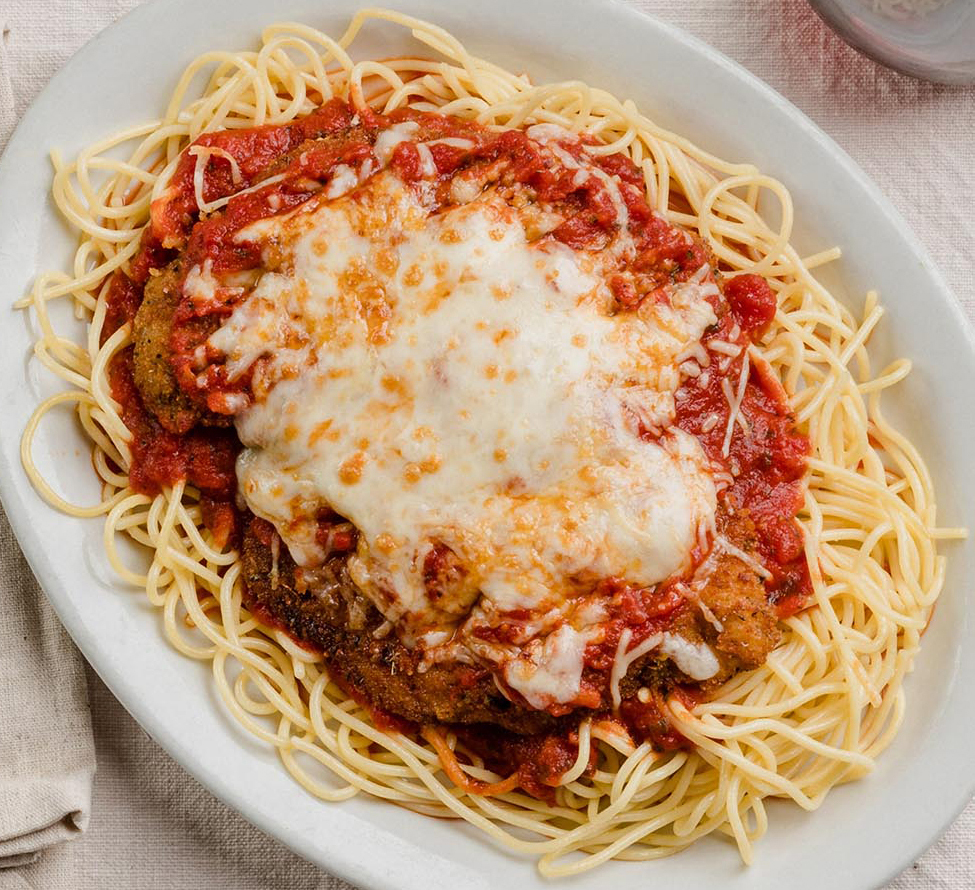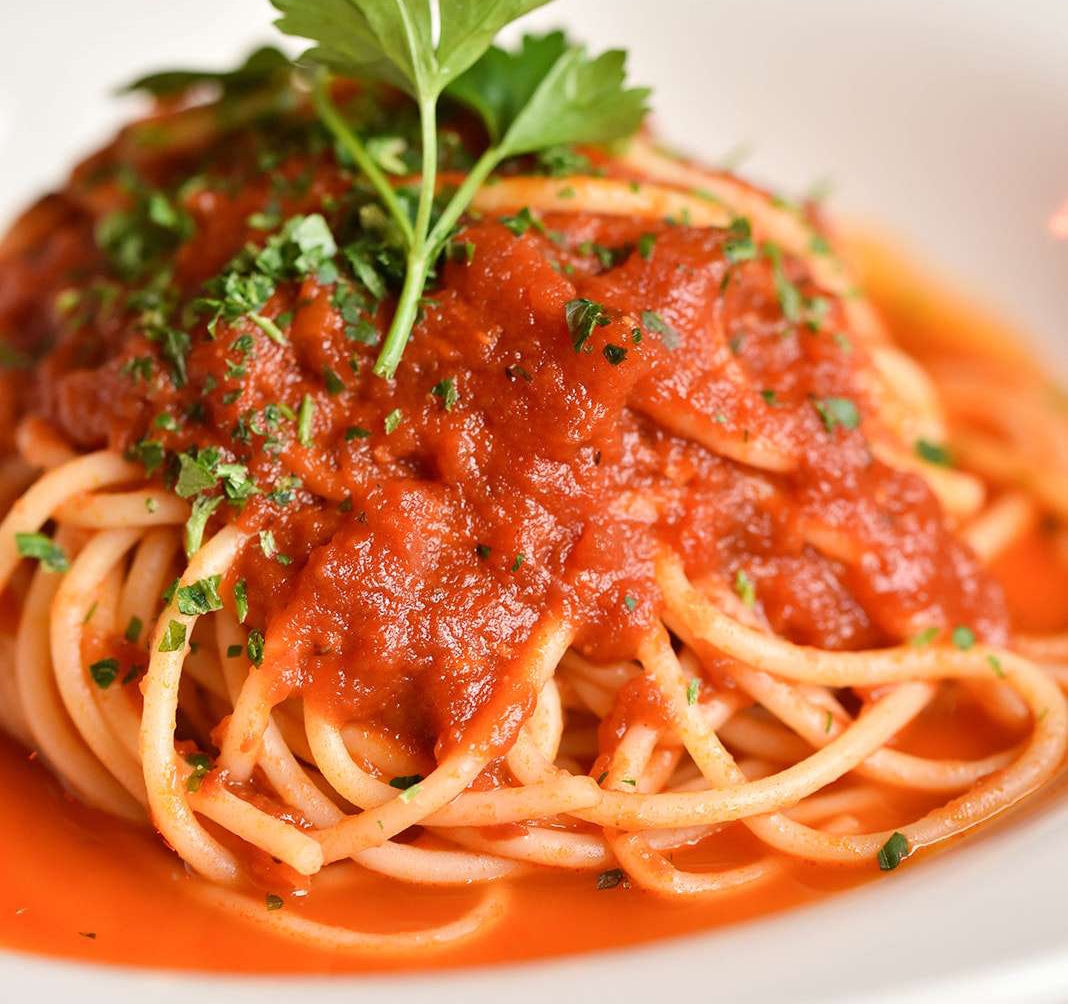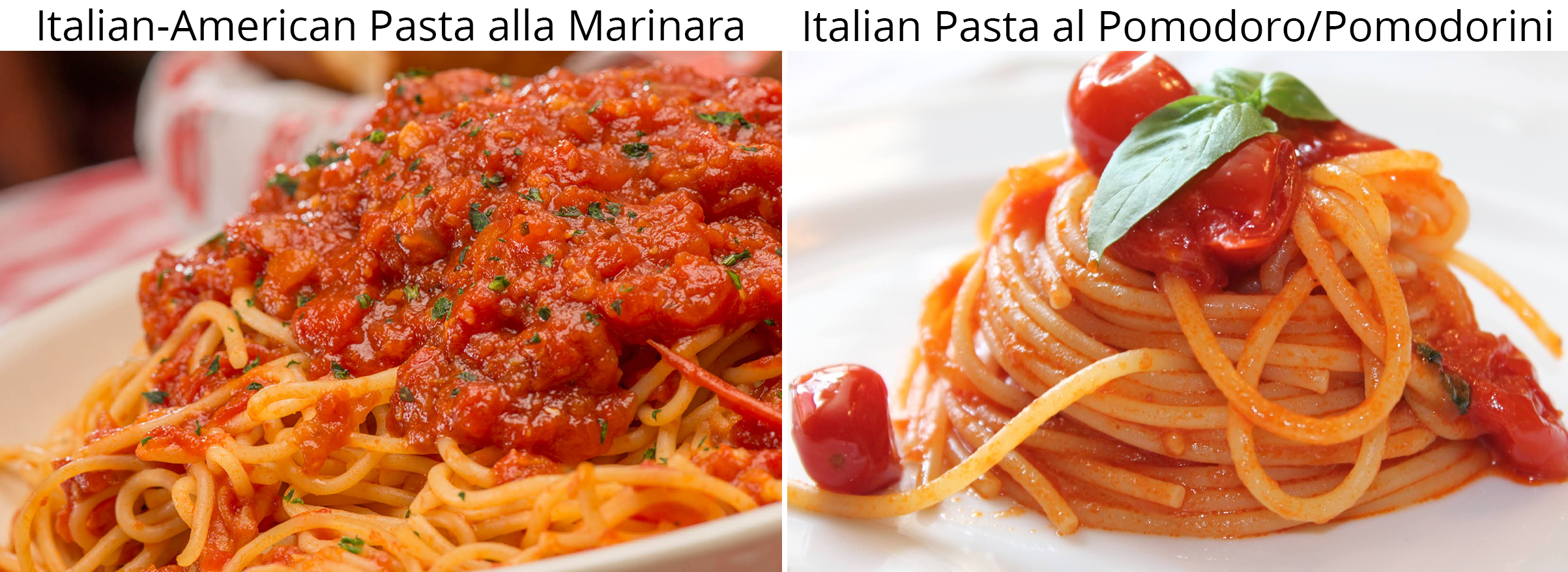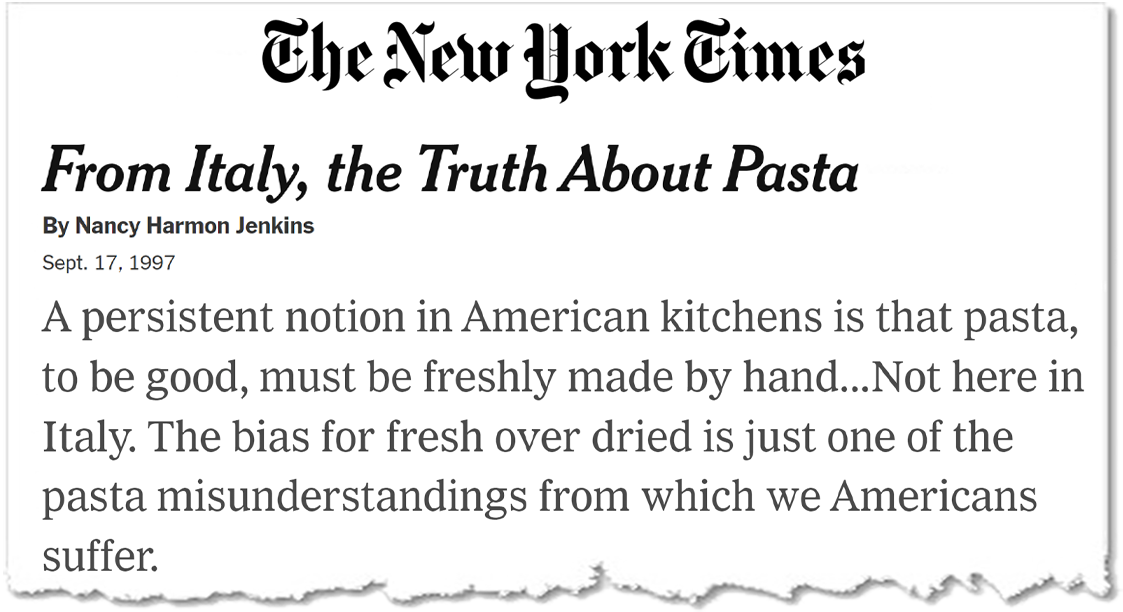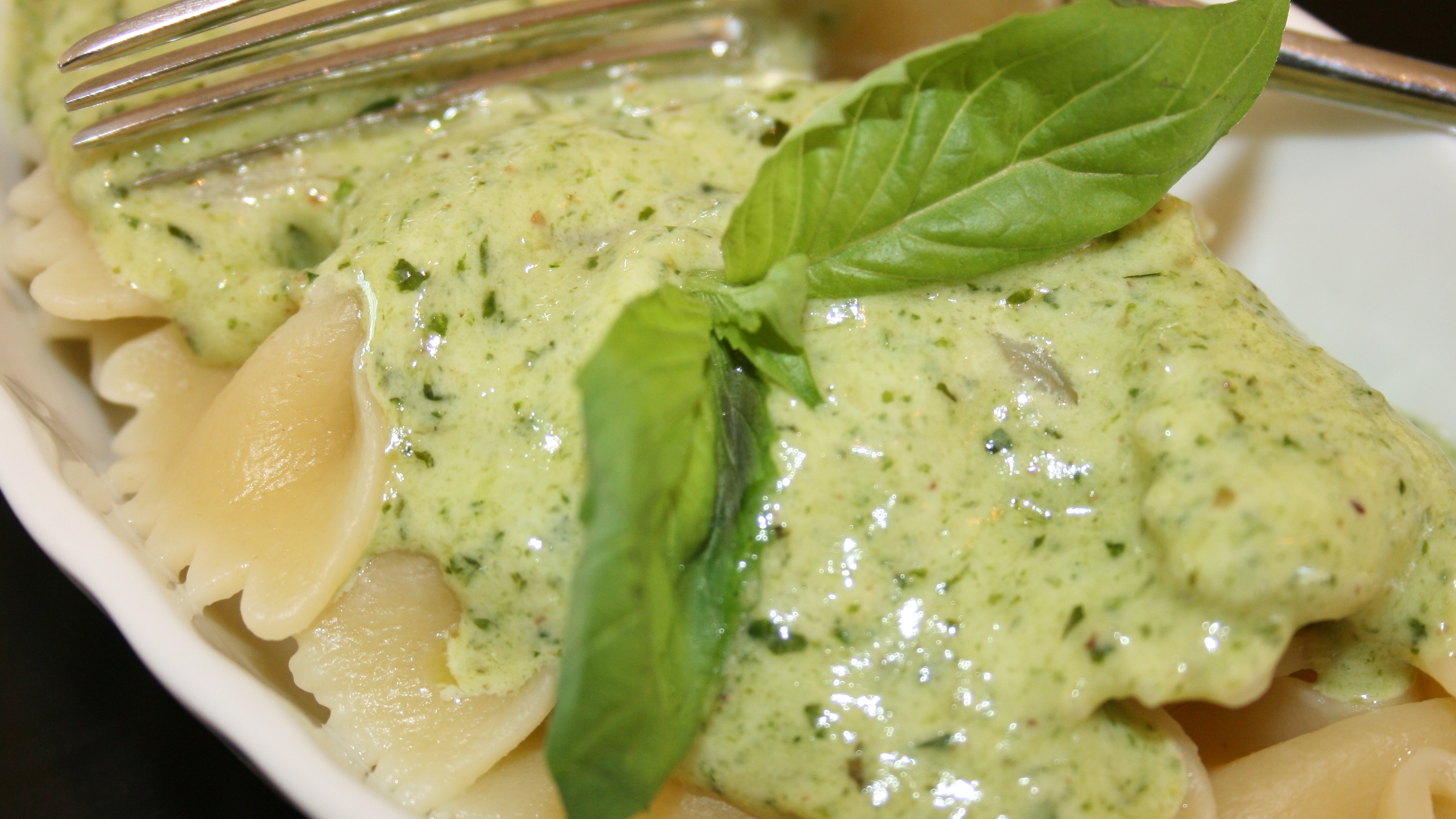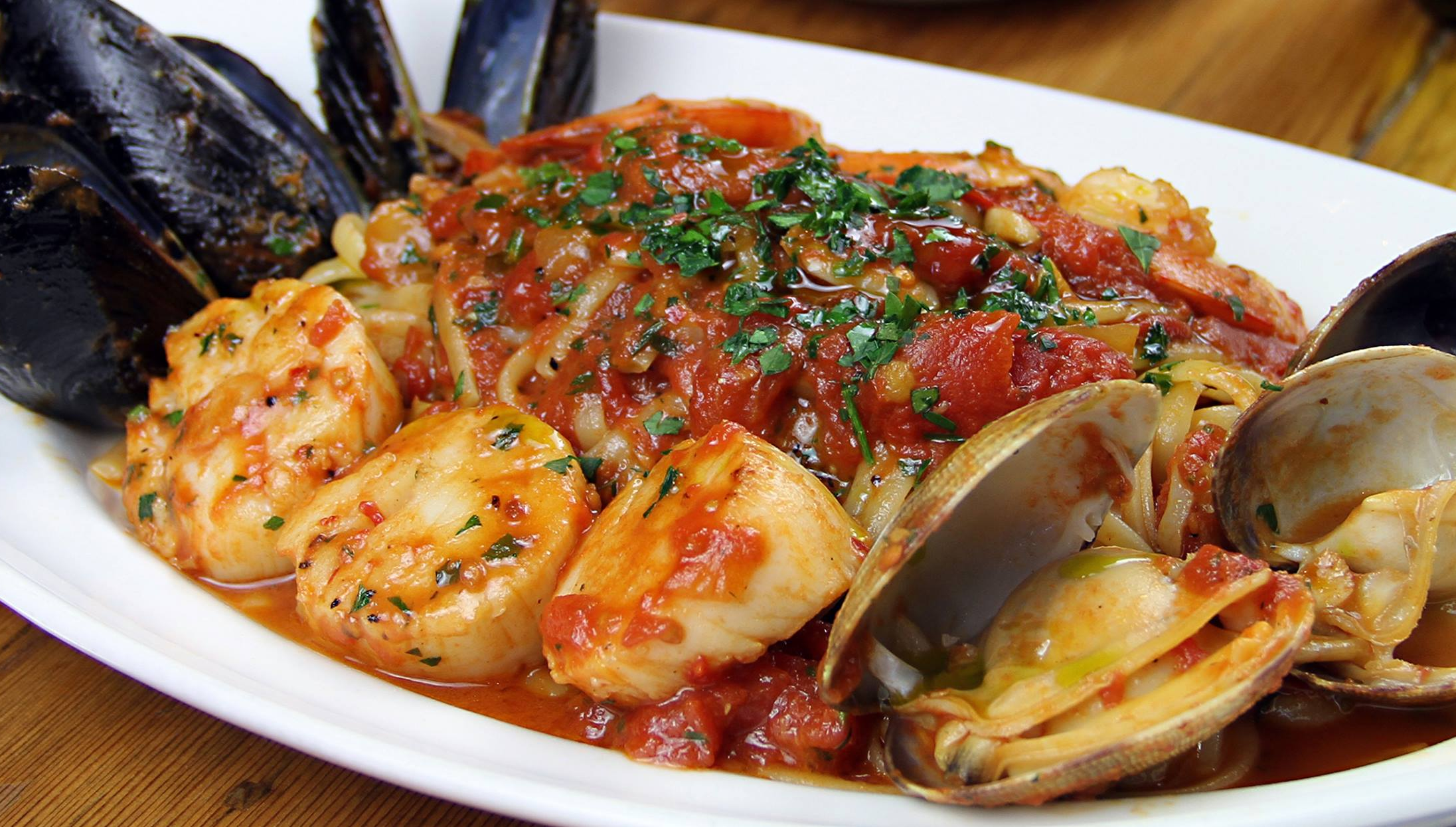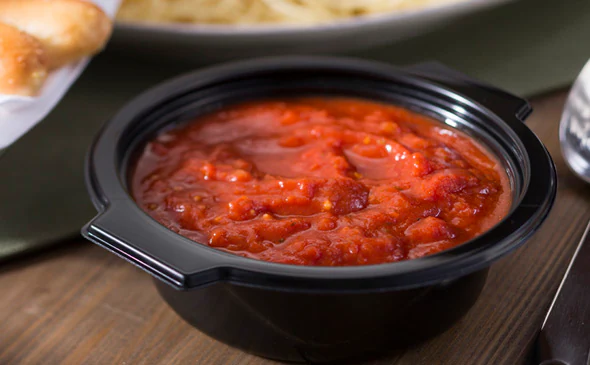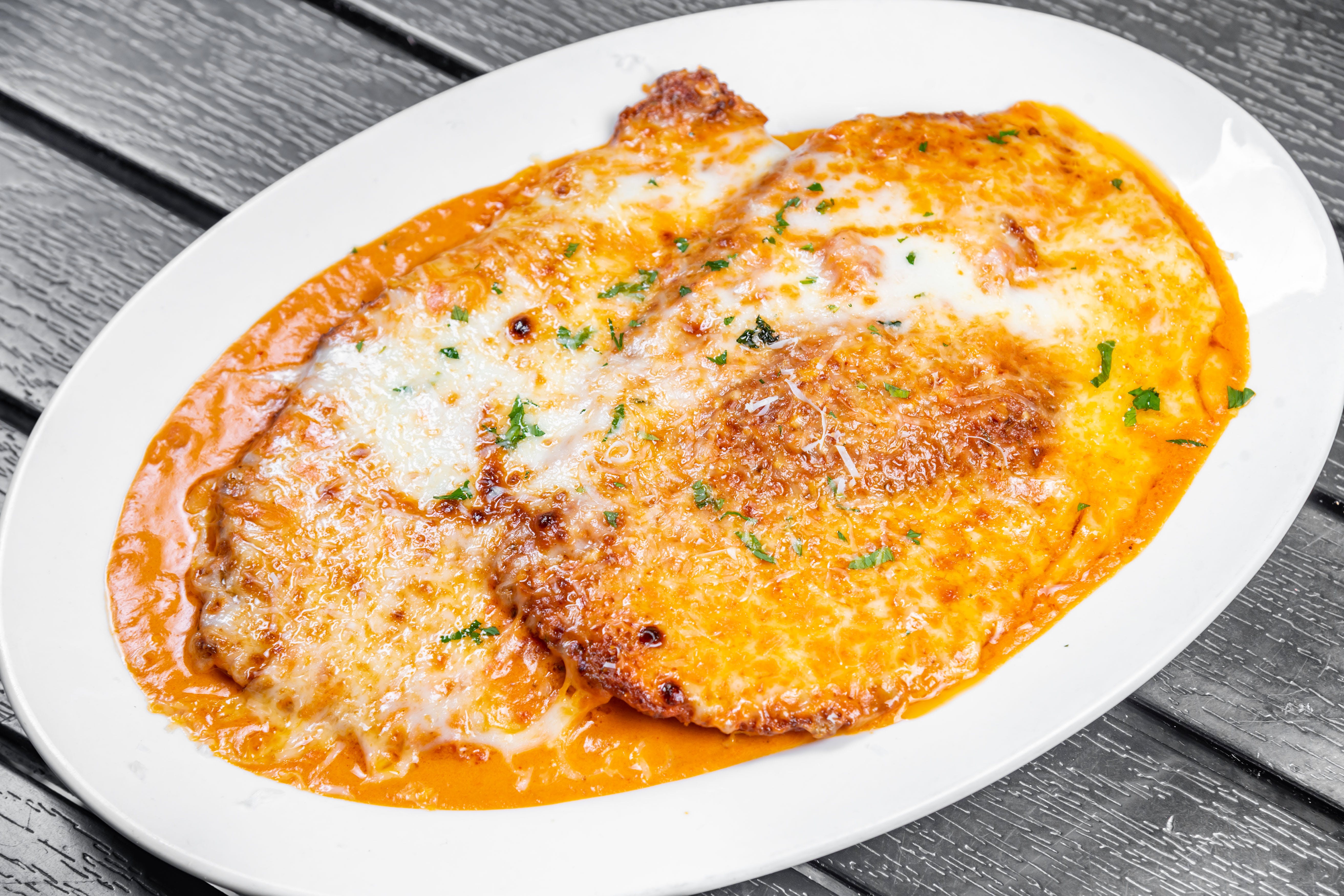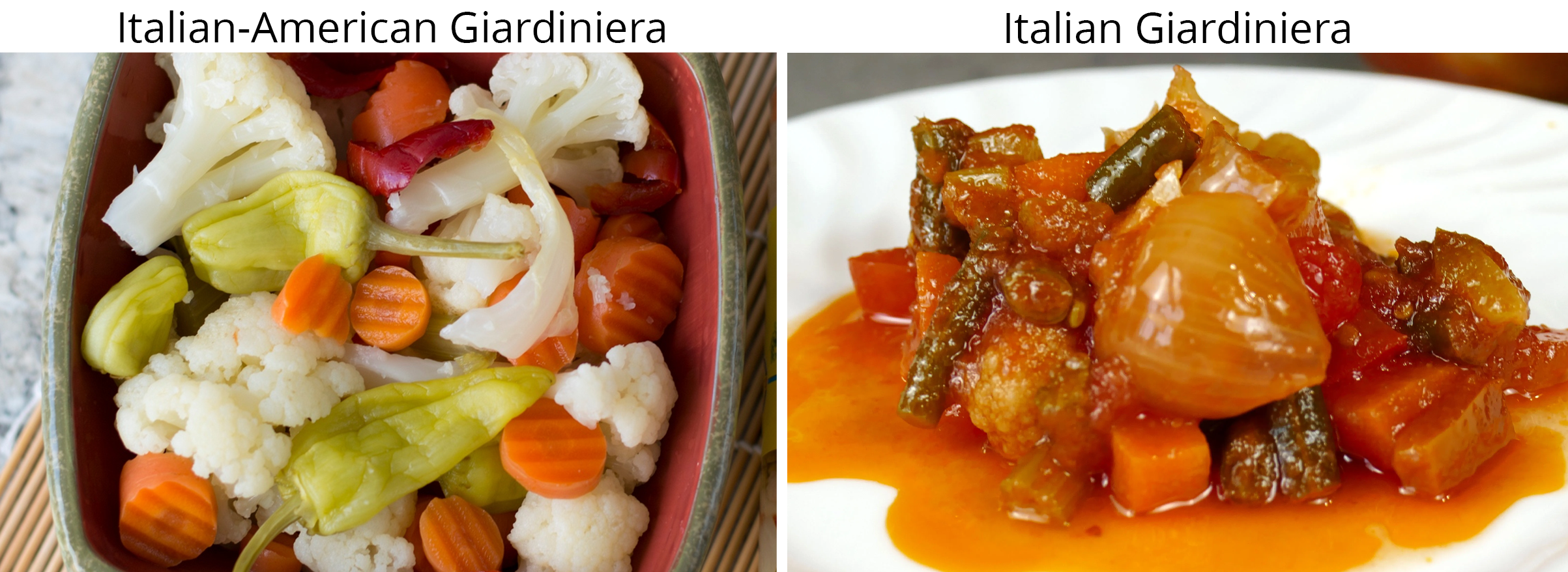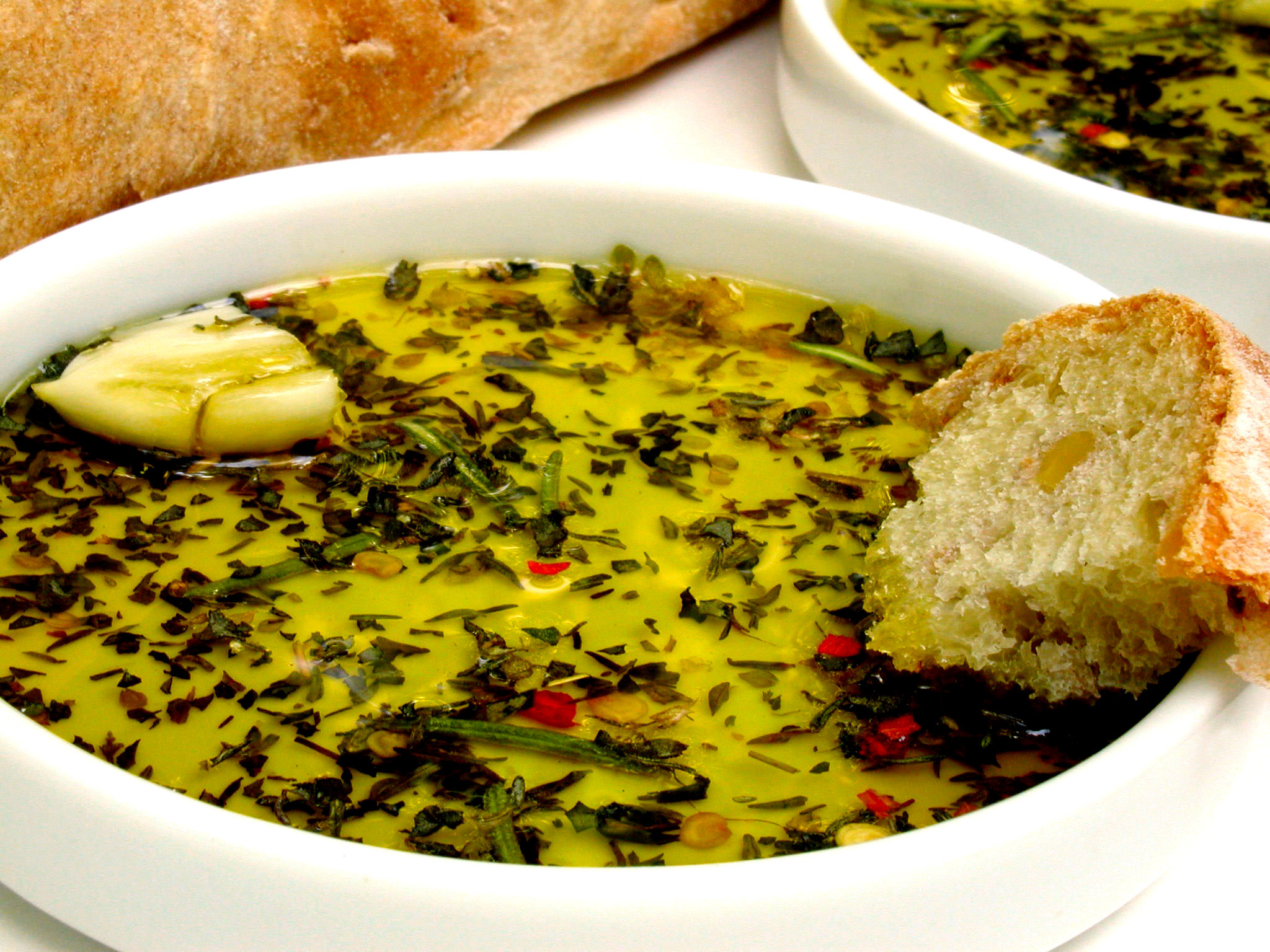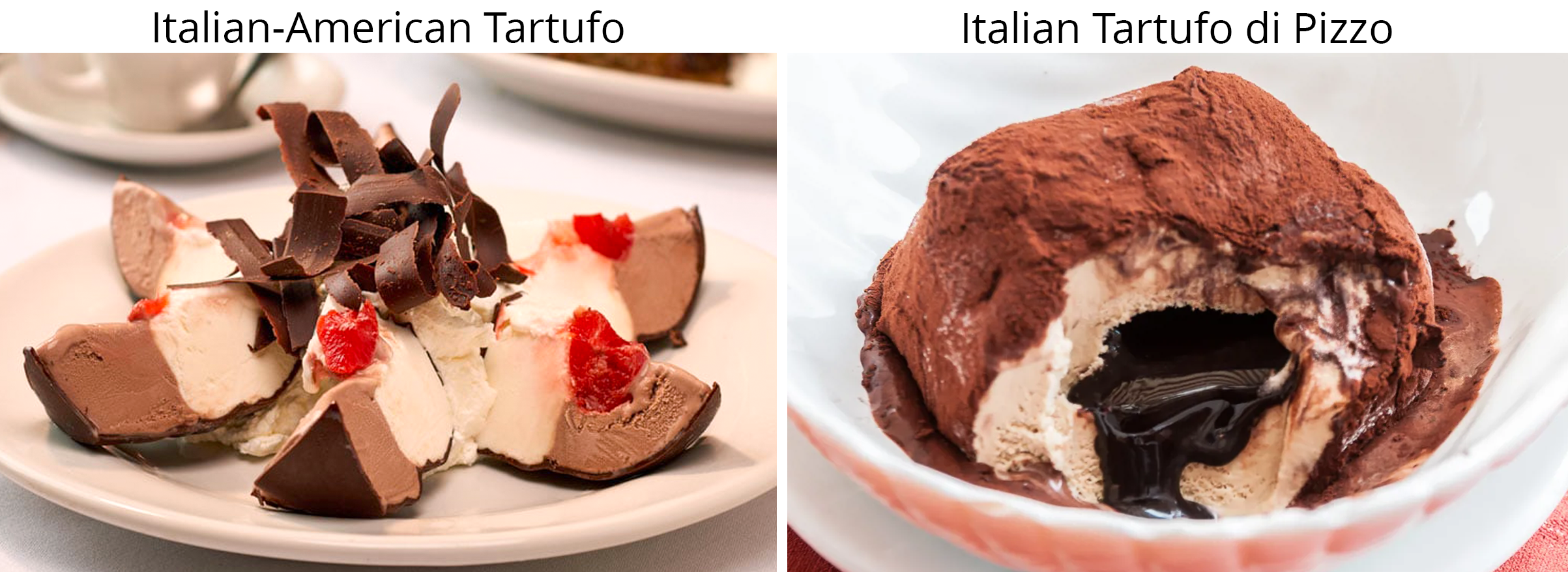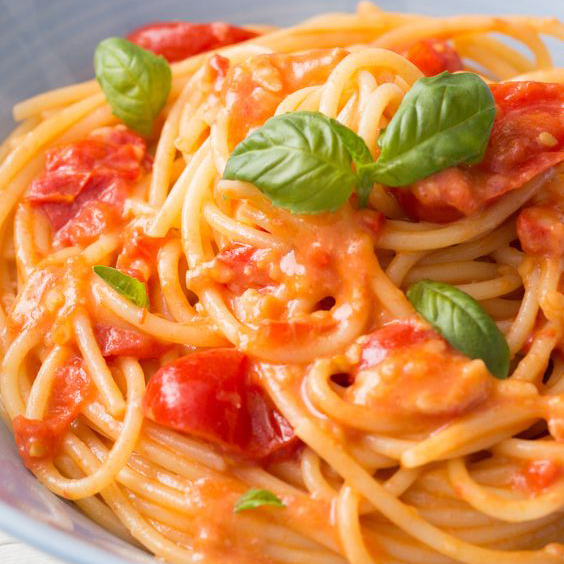Italian-American Dishes
by Alex Evins (v.10/25)
|
This is a compendium of Italian-American and Italian emigrant foods and dishes unique to or popularized in the United States, that are generally not found in Italy or have been modified beyond recognition of their ancestral dish. For information on Italian cuisine, see our Italian Food Reference. |
Antipasti/Soup
Pasta Dishes
Meat Dishes
Seafood Dishes
Salume
Cheese
Breads and Pizza
Sandwiches
*Carbonara: Anything aside from guanciale, pecorino Romano, black pepper, and, in some cases, grana padano.
**Fettuccine Alfredo: Fettuccine Alfredo originated in name at a single restaurant in Rome, Alfredo alla Scrofa, as a richer version of a common Italian dish known as pasta al burro e parmigiano—consisting of only pasta, butter, parmigiano reggiano, and pasta water. The mixing (“mantecare”) of the fat from the butter and cheese with the starch from the pasta water creates an emulsified sauce (see “mantecatura”)—similar in process to the traditional Roman pastas cacio e pepe, gricia, and carbonara—and like carbonara, there is and was no cream in this dish. Unlike carbonara and the other traditional Roman pastas, which are prepared with pecorino romano, Fettuccine Alfredo is made using parmigiano reggiano, a northern Italian grana cheese that is uncommon in Roman cuisine. When this simple dish began to gain popularity in the United States in the latter half of the 20th century, it was replicated and even further simplified by replacing the emulsified sauce with heavy cream. Eventually other ingredients common in Italian-American cuisine, like garlic and dried oregano, made their way into the dish. The original emulsified pasta al burro e parmigiano—a type of pasta in bianco—is still commonly eaten in Italy, especially by ill children, but not under the Alfredo name and never with cream.¶ Today, Fettuccine Alfredo is found only in two restaurants in Rome, Alfredo alla Scrofa and Il Vero Alfredo, both established by Alfredo di Lelio. In Naples, pasta al burro e parmigiano is known as pasta dei cornuti, or “pasta of cuckolds.” This dish of spaghetti or rigatoni, butter, parmigiano, and black pepper earned its name from its simplicity to make, and, as the anachronistic story goes, from wives who had extramarital affairs and, in the short time available before their husbands returned home, needed to put a hot meal on the table without being discovered. This is not the only Neapolitan pasta with a tantalizing name; spaghetti alla puttanesca—spaghetti with a tomato-based sauce including anchovies, black Gaeta olives, and capers—literally translates to “pasta in the style of whores.” The complete history of Fettuccine Alfredo is well described by Luca Cesari in The Discovery of Pasta: A History in Ten Dishes.
†Lasagna: In Italy, lasagne al forno represents a diverse range of baked pasta dishes that vary by region. For instance, Lasagne Verdi alla Bolognese from Bologna features fresh green spinach egg pasta layered with béchamel and Bolognese ragù—a slow-cooked beef and pancetta (pork) based meat sauce. Lasagne alla Napoletana/di Carnevale from Naples is markedly different, featuring layers of dry semolina pasta with ruffled edges (“lasagna riccia”) layered with ricotta, small meatballs, hard-boiled eggs, provola, and Ragu alla Napoletana—a slow-cooked veal, pork sausage, and pork rib-based sauce. No Italian lasagne contains the copious amounts of melted cheese commonly found in Italian-American lasagna, which is more standardized and richer—generally consisting of pasta sheets layered with ricotta, grated Parmesan, a garlic-rich ground beef or Italian sausage based tomato meat sauce, and large amounts of American shredded low-moisture mozzarella.§ Italian-American lasagna
§American Low-Moisture Mozzarella: A type of hard low moisture mozzarella specific to North America—a young cow’s milk cheese more reminiscent of Caciocavallo or Scamorza—distinct in production, flavor, and consistency from the Italian Mozzarella per Pizza
Gastronomic Pseudo-Italianisms: A plethora of faux Italian gastronomic terms, such as “cioppino” and “cascatelli,” exist in the American English lexicon. Other notable examples include “al fresco,” which is equivalent to the Italian all’aperto (in Italian, al fresco actually means “in prison”); “rollatini,” known in Italian as involtini; “rotini,” known in Italian as fusilli; “manicotti,” comparable to Italian cannelloni; “orzo,” known in Italian as risoni (in Italian, orzo means barley
Singular/Plural Mismatch in Italian Loanwords: In American English, some Italian food loanwords are improperly used in their plural form. For example, panini is the plural form of the Italian word panino, meaning a single sandwich, whereas in American English panini is often used to refer to a single sandwich. The same is true for cannoli in English, where cannoli is usually used as a singular, but it is grammatically plural; the corresponding singular is cannolo. Other common examples include lasagna (singular) and lasagne (plural), salame and salami, gelato and gelati, raviolo and ravioli, etc.
Italian-American Pronunciation: Many Italian-Americans, particularly those from the New Jersey area, have adopted a distinct apocopic pronunciation scheme, somewhat reminiscent of Neapolitan and Sicilian dialects, that involves dropping the last vowel of some words—a linguistic phenomenon not present in standard Italian. A vowel shift in the pronunciation of the “o” sound from “oh” to “uh” is also characteristic. For example, mozzarella (“mohz-zah-REHL-lah”) is pronounced “muhtz-zah-rel,” prosciutto (“pro-SHOOT-oh”) as “pruh-shoot,” cavatelli (“KAH-vah-TEL-lee”) as “gav-ah-deel,” bolognese (“boah-loan-YAY-zeh”) as “bowl-un-yayz,” calzone (“cal-ZOH-neh”) as “cal-zone,” capocollo (“cah-poh-COH-low”) as “gabagool,” pasta e fagioli (“pasta ee fah-JOE-lee”) as “pasta ah fa-zhool
Japanese-Italian: For information on Japanese-Italian Cuisine, known as Itameshi (イタ飯) or Wafu-Italian (和風イタリアン), see this guide, as well as these recipes for Pepe-Tama and Mentaiko Spaghetti. |
|
|
Ingredients/Techniques/Styles Not Used in Italy
Sauces
Holiday Meals
Other
Desserts
Beverages
“Italian” Named Items (Grouped)
‖Garlic: Italian-American cuisine is often characterized by its heavy use of garlic, both for cooking and consumption. In Italian-American recipes, it is not uncommon to find multiple cloves of garlic used in a single dish, especially where it is minced, incorporated into, and served with the dish. This is in stark contrast to the parsimonious use of garlic in Italian cuisine, where garlic is typically utilized to infuse flavor into olive oil by cooking one or two whole crushed garlic cloves that are removed prior to serving (e.g. “aglio in camicia”). This is not uncommon even in dishes that are defined by their use of garlic, including spaghetti aglio e olio, as the purpose of garlic is to enhance the flavor of the oil rather than to be consumed directly. In Italy, garlic has been historically associated with poverty, particularly in regions that experienced economic hardships following the country's unification in 1861. The majority of Italian immigrants who came to the United States were escaping this poverty, but their use of garlic, a cheap and easily accessible ingredient, followed them and became central to Italian-American cooking. Conversely, as Italy developed economically through the latter half of the 20th century, the use of garlic became stigmatized due to its prior association with dishes of the poor, where it was used to compensate for flavor in the absence of other ingredients. There are of course rare exceptions where garlic is directly consumed—including pesto alla genovese, bagna càuda, and soma d'aj piemontese, all from Northwest Italy—but these remain the exception and not the rule. In Italy, heavy use of garlic is more closely associated with East and Southeast Asian cuisines. Additionally, in several regions, including Abruzzo, dishes that contain cheese traditionally do not contain onion, garlic, or parsley. Furthermore, in Italy, onion and garlic are typically not used together, with garlic being more common in seafood dishes. In parts of Tuscany, a much milder version known as aglione (elephant garlic), or Aglione della Valdichiana, is sometimes used in place of aglio (garlic), especially for pici all'aglione.
¶Milk and Cream: In Italy, the use of milk or heavy cream in pastas, aside from very small amounts, is considered passé. Cream sauces or cream-based sauces are rare and differ significantly in consistency from their Italian-American counterparts. Rather, Italian pasta dishes rely much more heavily on emulsified sauces (see “mantecatura”). Italians also tend to view milk and cream as heavy foods that hinder digestion—hence why cappuccinos are not consumed after 11:00 am. This may be the result of the exceedingly high 72% lactose malabsorption rate in Italy, especially as milk and cream contain significantly higher lactose contents than cheese or gelato—especially Parmigiano Reggiano, which is naturally lactose-free.
‡Marinara Sauce: In Italy, “alla marinara” refers either to sauces made with Mediterranean fresh herbs (such as fresh basil and oregano and often olives, capers, and/or anchovies) or seafood, and does not imply the inclusion or exclusion of tomato. “Alla marinara” is also synonymous with pizza alla marinara—a Neapolitan pizza topped only with raw crushed tomatoes or tomato passata, garlic, oregano, and olive oil. The Italian-American thin, cooked tomato-based marinara sauce—generally consisting of tomatoes, abundant garlic, dried oregano, and onions—that is commonly used as a pasta or dipping sauce, does not exist in Italy. The closest analog to Italian-American marinara sauce in Italy would be the Neapolitan pummarola. Italian-American pasta/spaghetti marinara is most similar to the Italian pasta al pomodoro/pomodorini
#Emulsified Sauces – “Mantecatura”: “Mantecare” is the process of finishing pasta or risotto by creating a sauce through emulsifying a fat—typically cheese, extra virgin olive oil, butter, and/or rendered fat from meat (e.g. guanciale)—with the starch-rich pasta cooking water, wherein the starch from the pasta water or rice acts as a natural emulsifier. This creates a texturally creamy, emulsified sauce (“mantecatura”) without the use of any actual cream. Mantecare is a fundamental technique in Italian cuisine, essential for a wide array of pasta dishes including carbonara, all'amatriciana, alla gricia, cacio e pepe, burro e Parmigiano, and all risottos (see Fresh vs Dry Pasta). Many Italian-American interpretations—most notably carbonara and Alfredo—have replaced emulsified sauces with heavy cream, completely altering the essence, taste, and texture of the original dishes. This simplistic substitution seems to perpetuate confusion among Americans between a sauce with a creamy texture and a sauce made with actual dairy cream—an ingredient uncommon in Italian pasta recipes (see Milk and Cream). For more, see our complete guide to Mantecare.
ΔSugar in Tomato Sauces: The addition of sugar to Italian-American tomato sauces can likely be traced back to Southern Italian immigrants who were compensating for the less flavorful fresh and canned tomato varieties found in North America—varieties bred for uniform size, shape, and color, rather than flavor—which lack the intense sweetness and flavor of the tomatoes grown in Southern Italy, such as the Piennolo del Vesuvio, Pomodoro di Pachino, San Marzano dell'Agro Sarnese-Nocerino, and others.
♦Fresh vs Dry Pasta: Neither dry nor fresh pasta is superior to the other, nor are they interchangeable. They are different and used differently, and for different dishes. Dry pasta is firm and cooked al dente, and typical of southern Italian dishes, whereas fresh pasta is soft and delicate and used for stuffed pastas, and is typical of northern Italian dishes. Fresh pasta cannot, by its nature, be cooked al dente, as it never possesses the necessary white core
“Red Sauce Joints”: For Italian-American “Red-Sauce Joints” in New York City, we recommend Bamonte's, Emilio's Ballato, Campagnola, Don Peppe, Monte's Trattoria, Dominick's, and Sam's. For Italian-American sandwiches, we recommend Faicco’s Italian Specialties and Fiore's House of Quality. For more, see our New York City Guide. For Italian-American restaurants around the United States, see the Regional and Ethnic Cuisine section of our American Classics list. |
